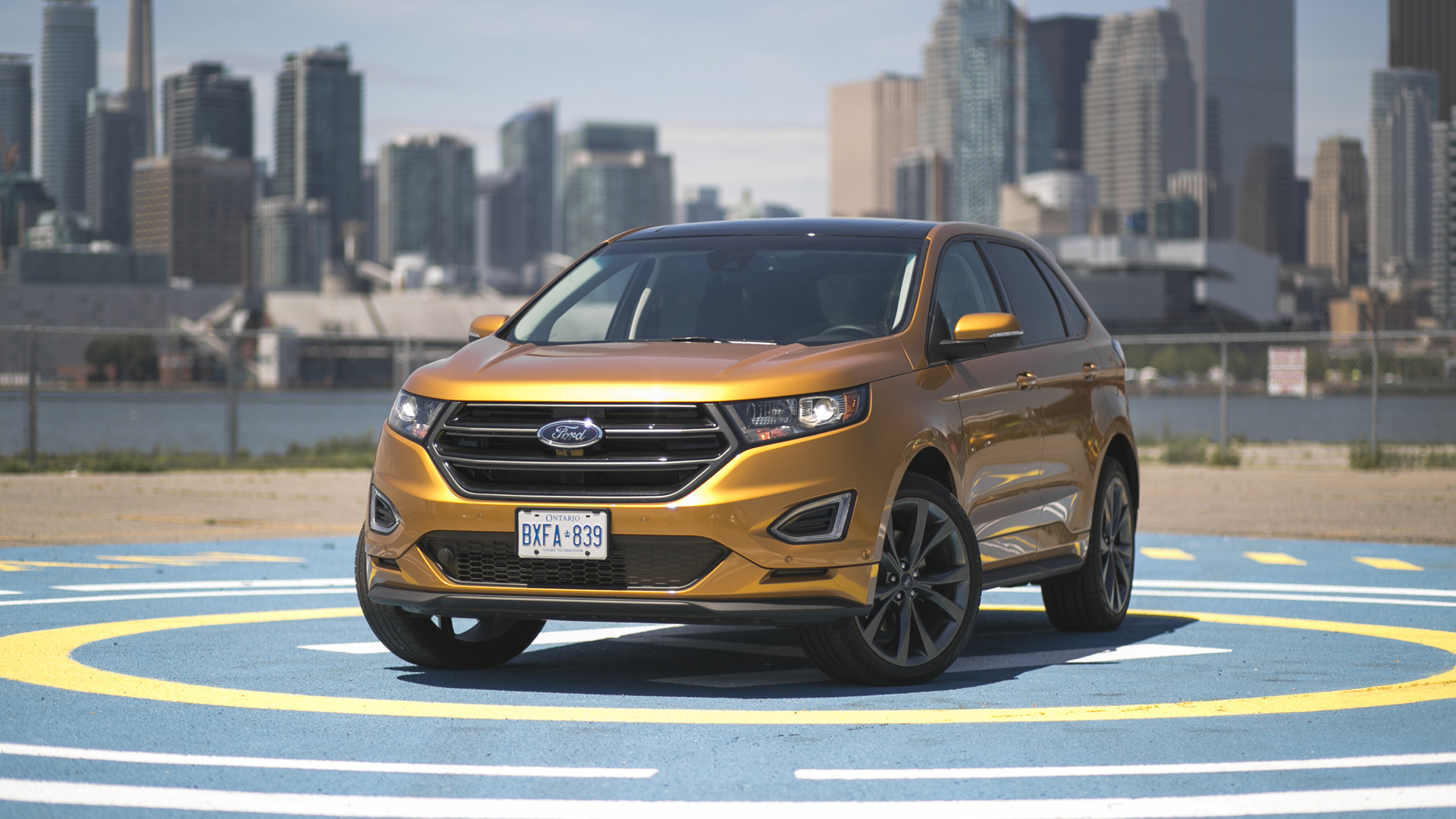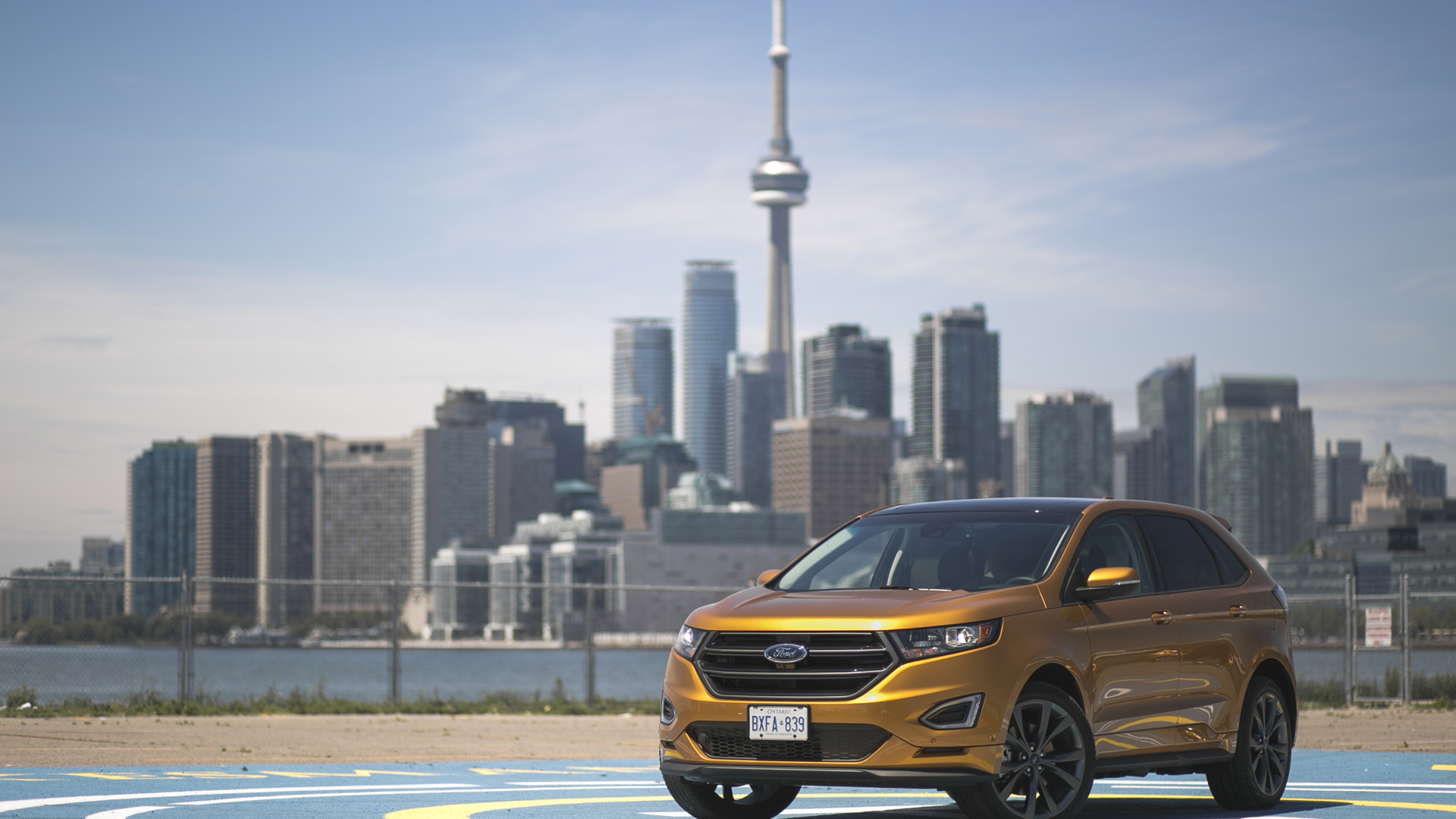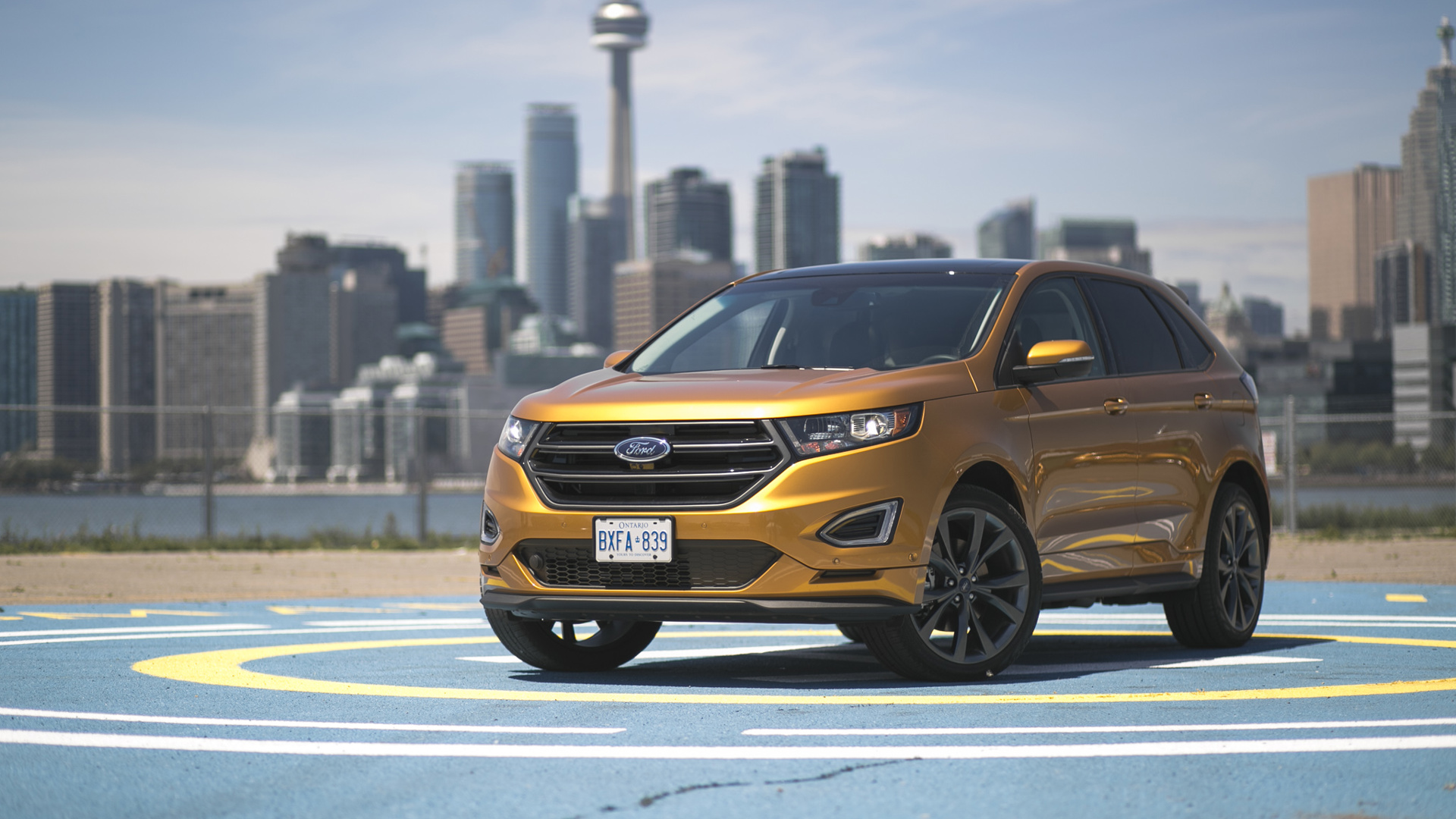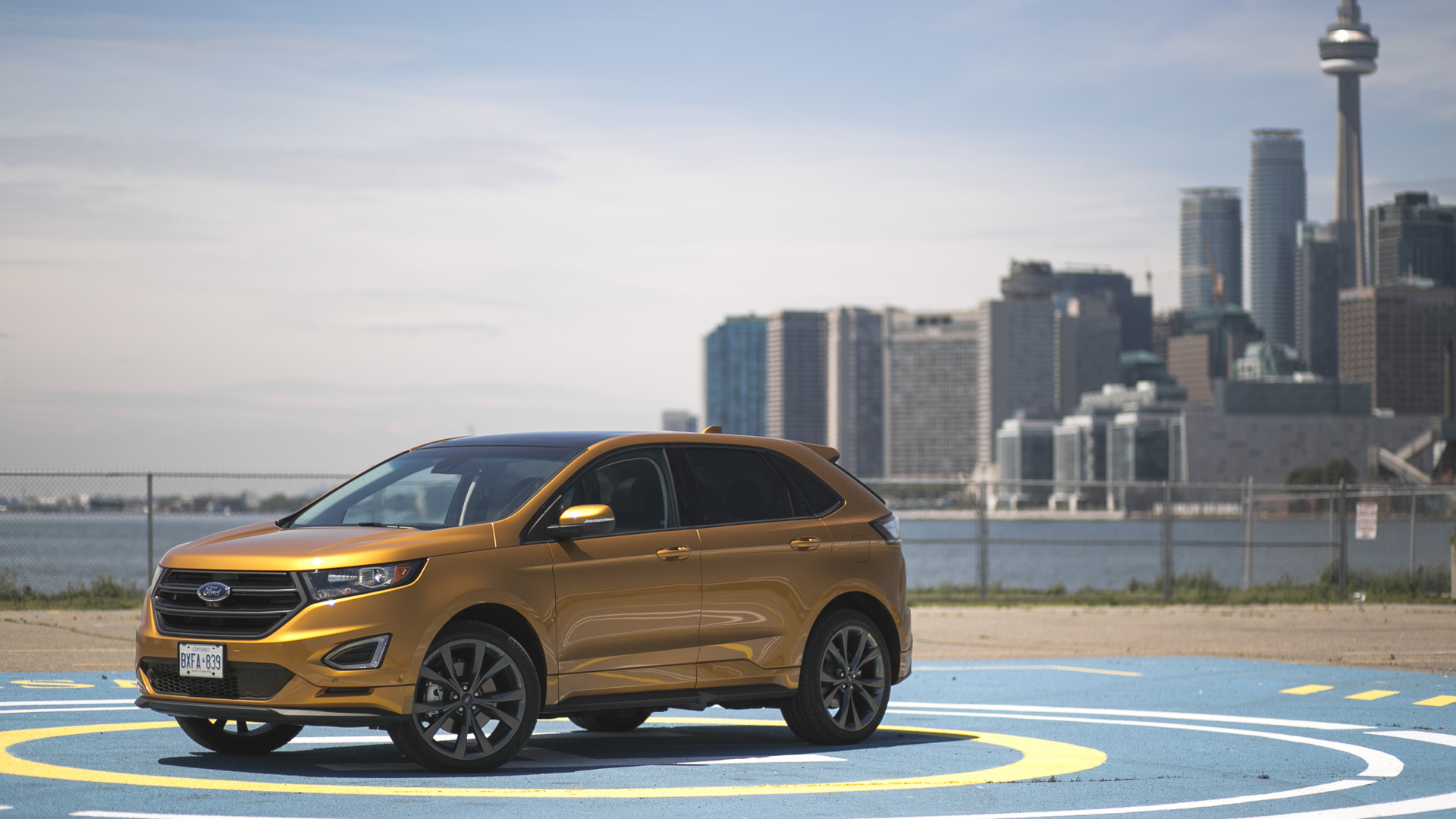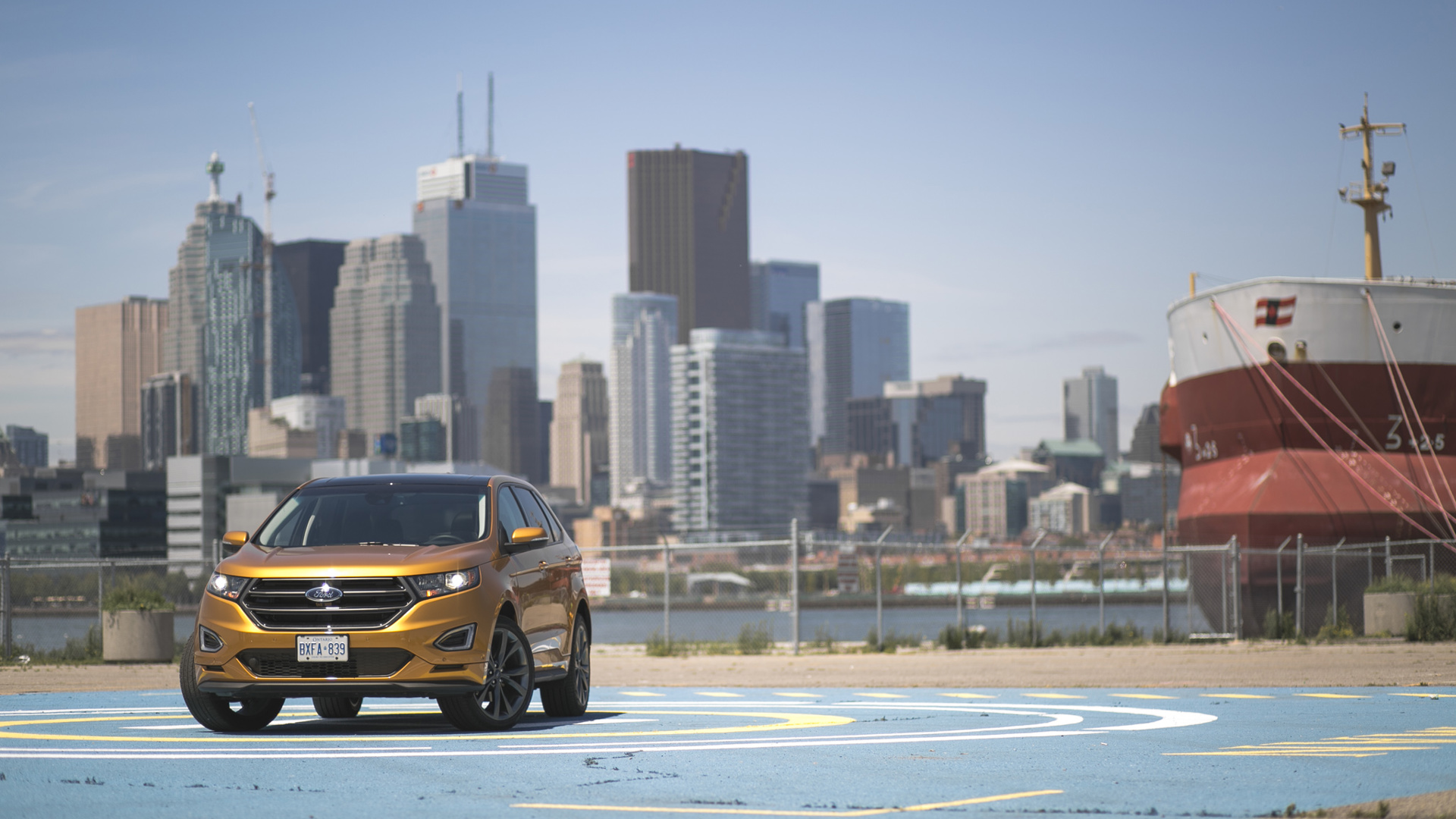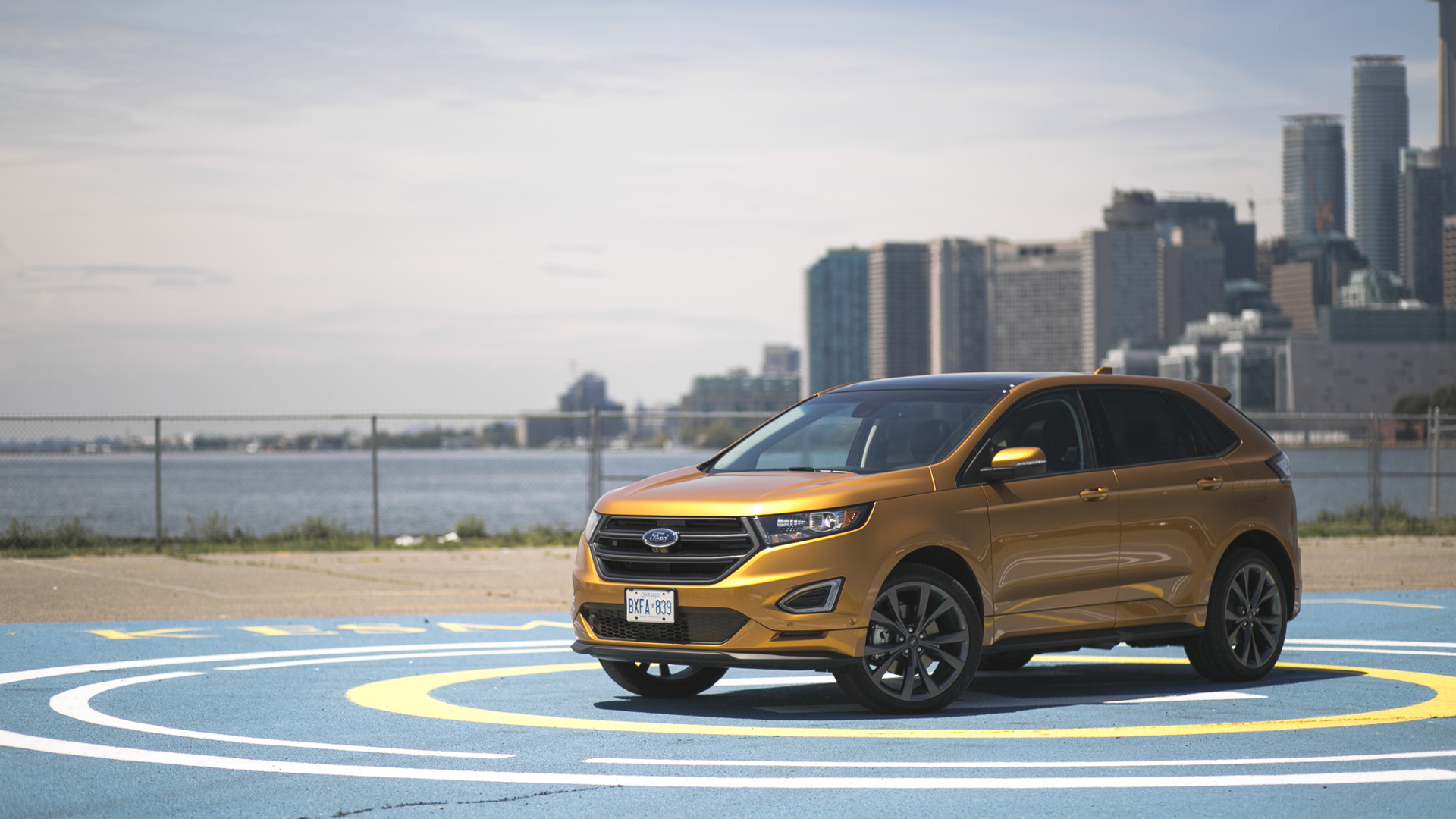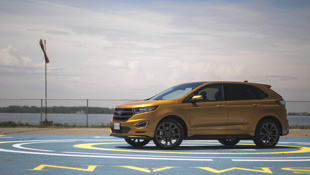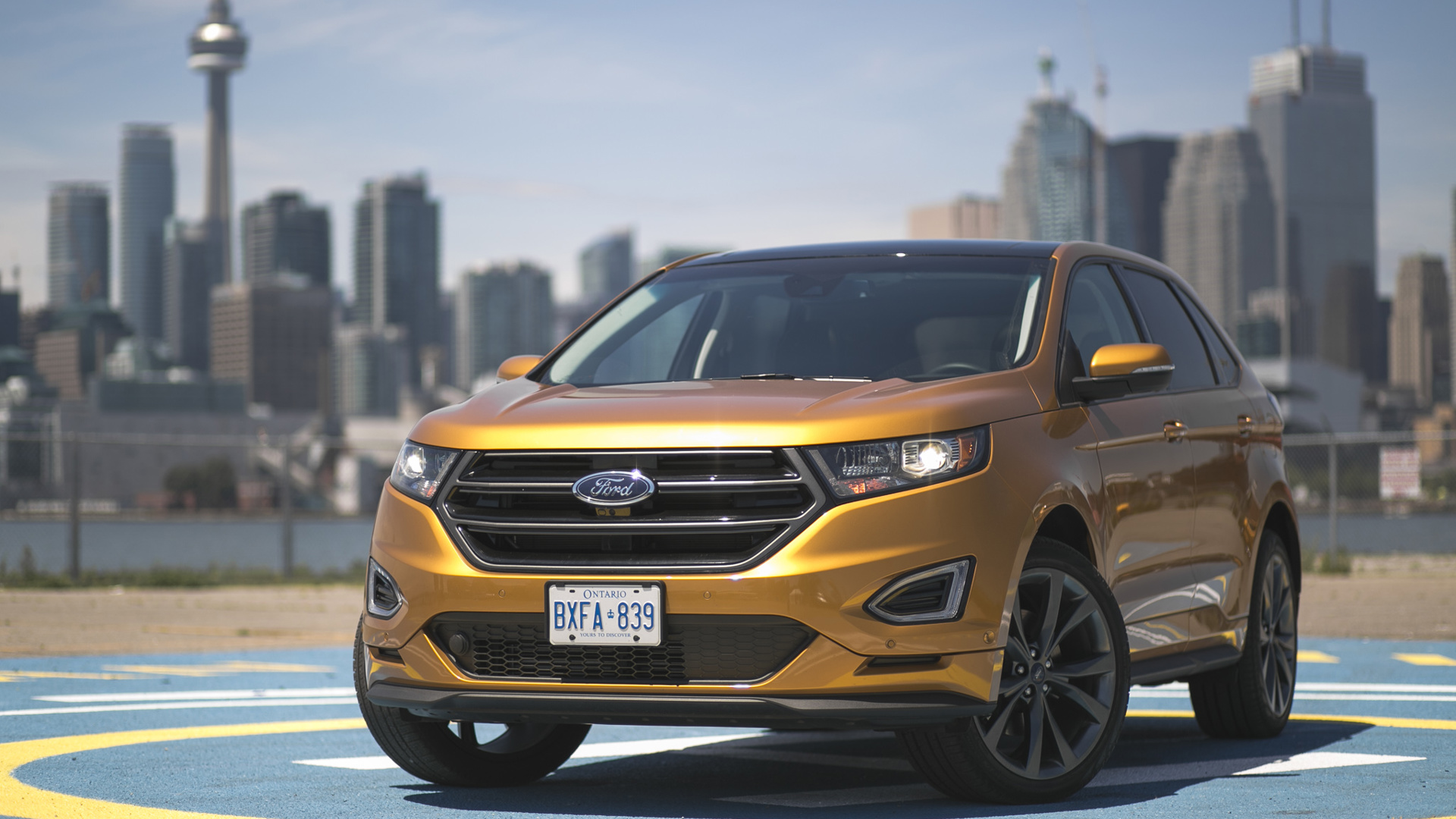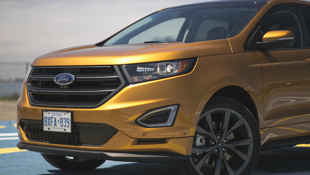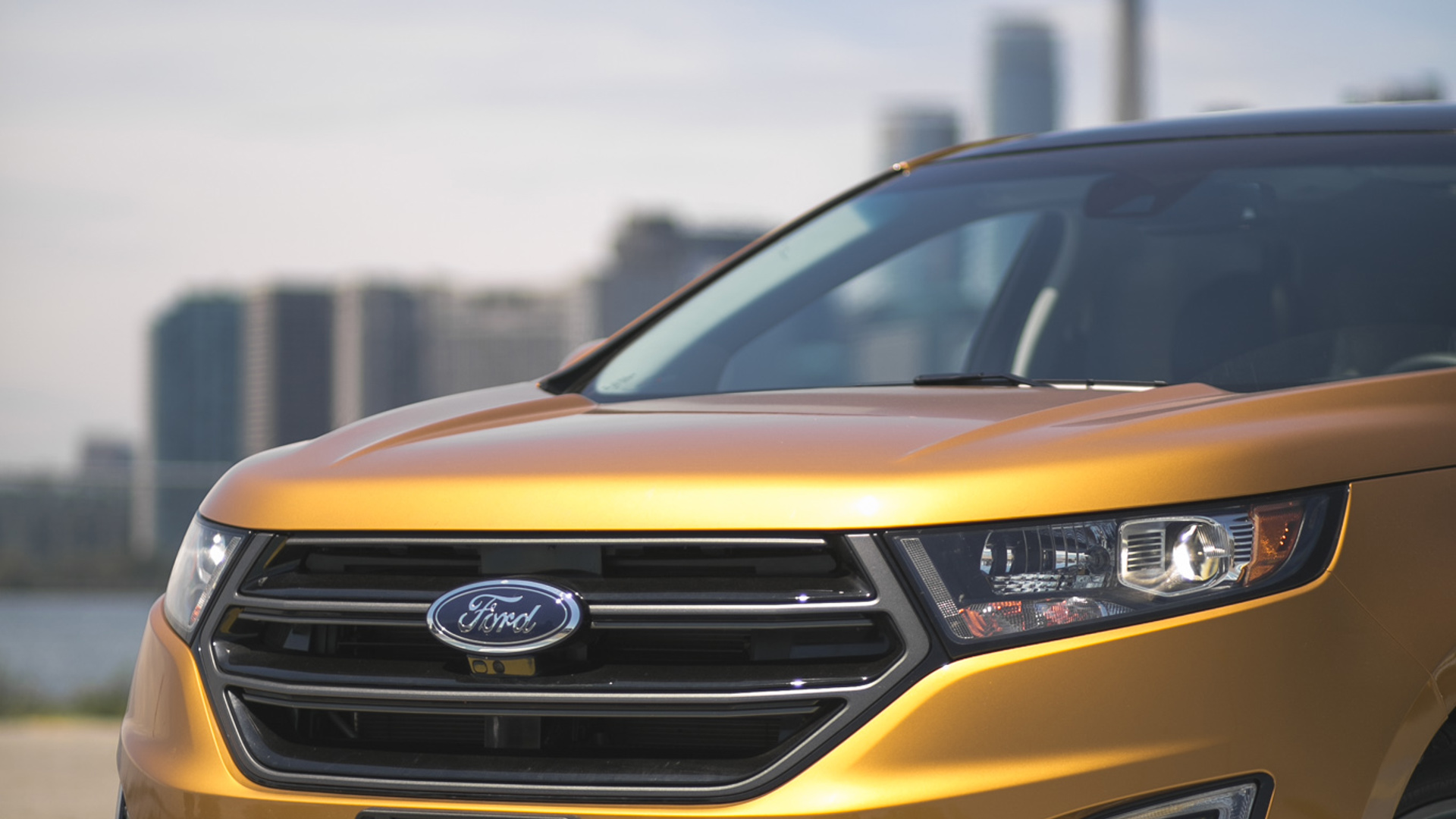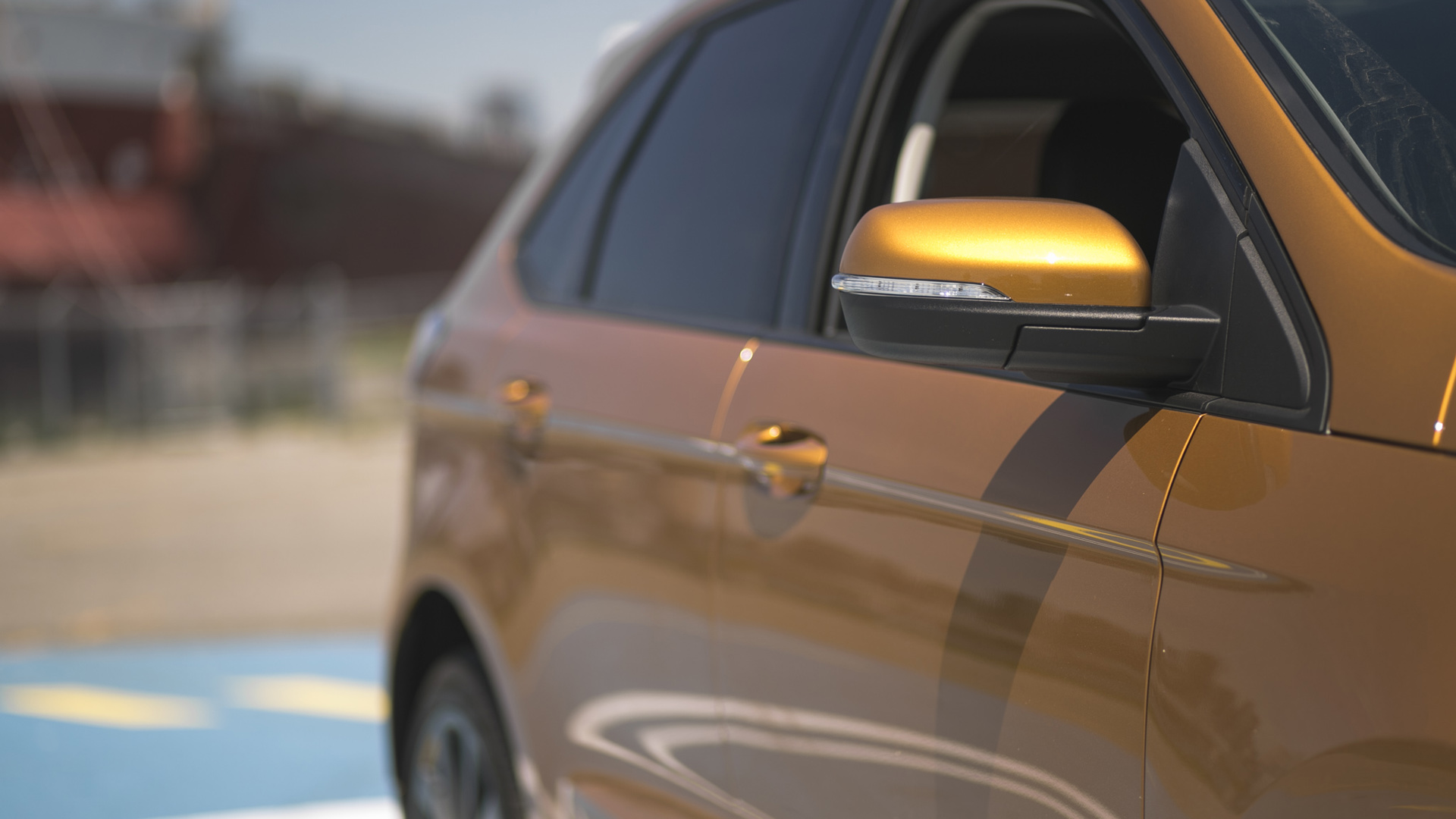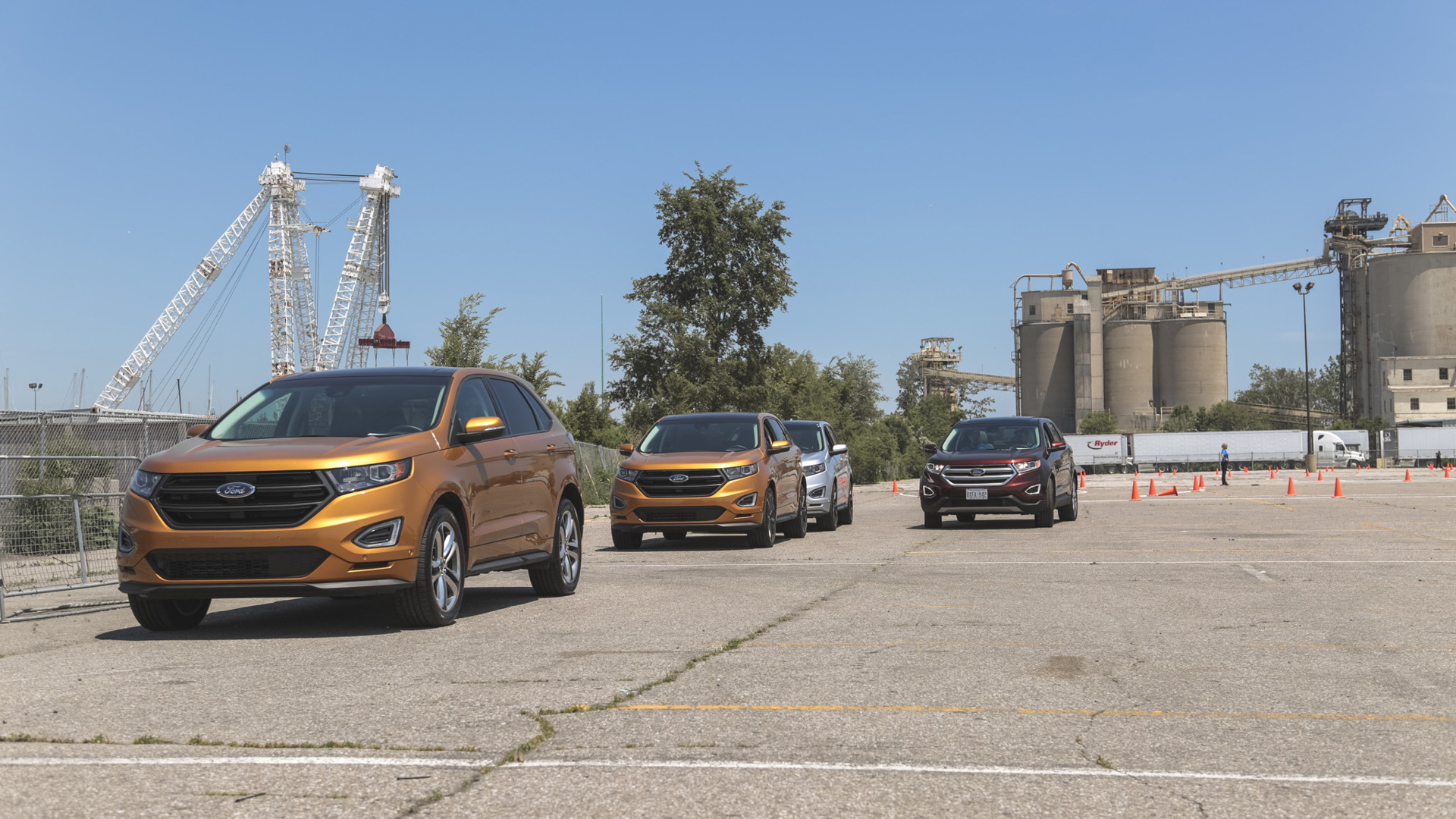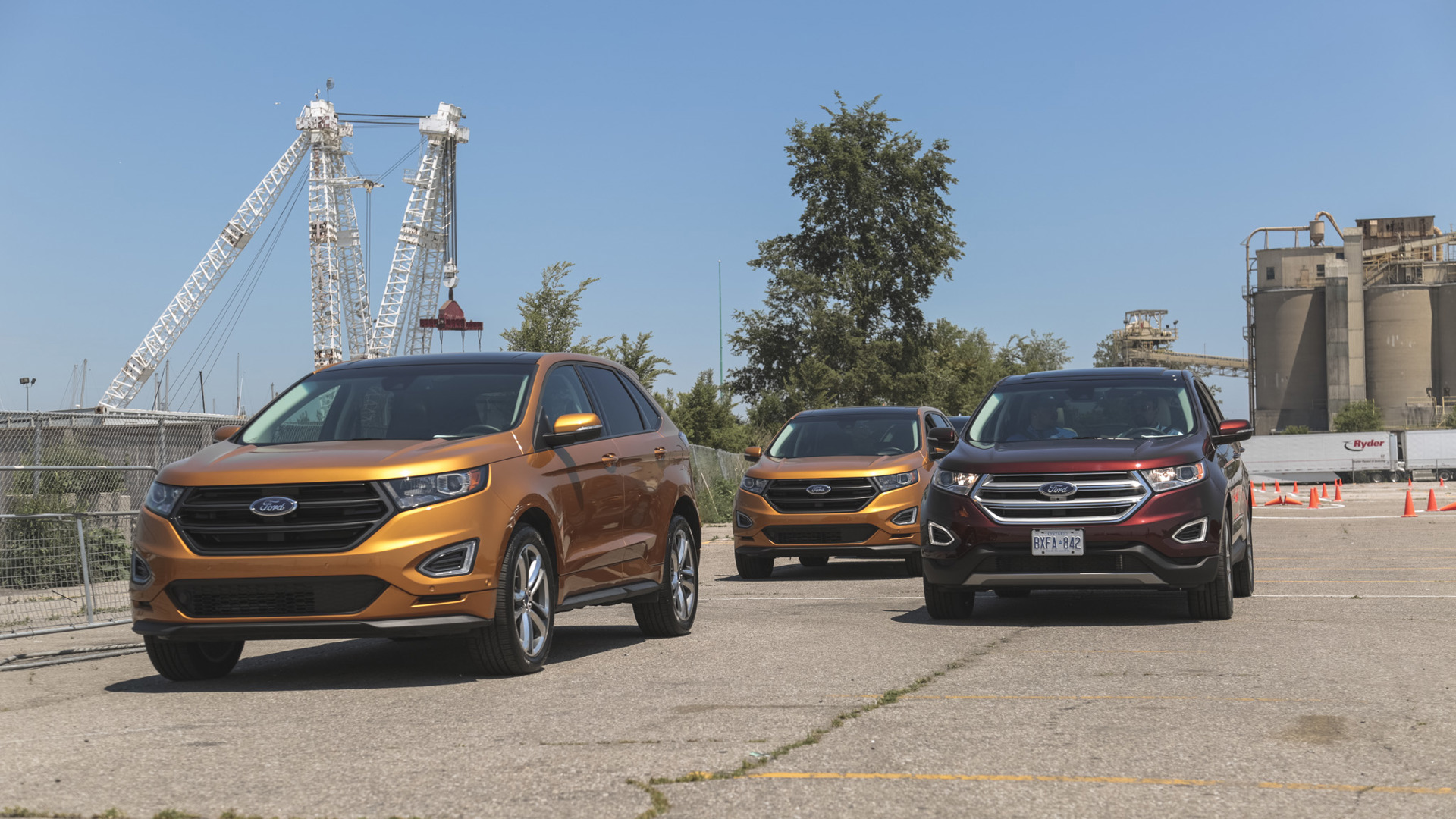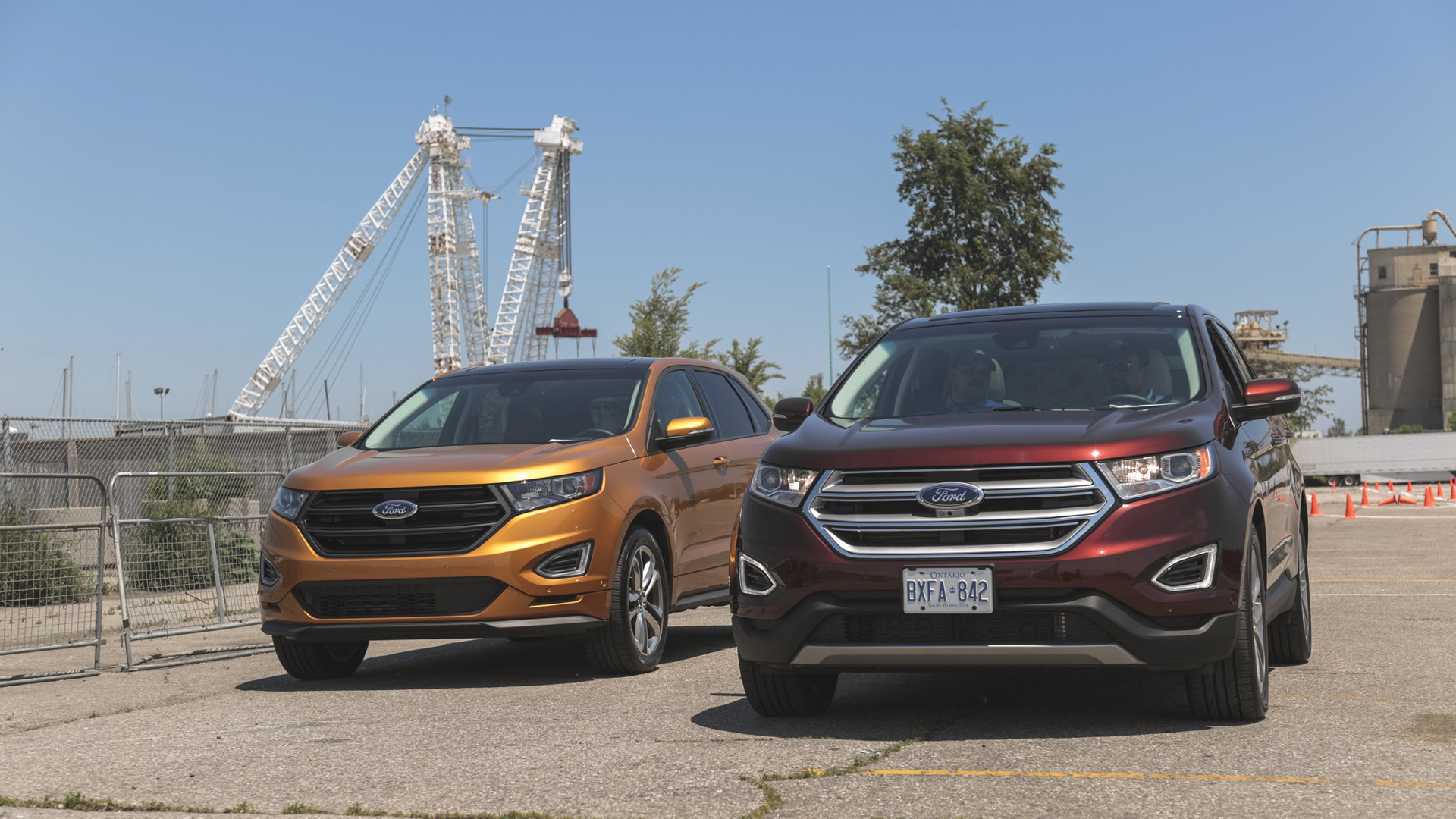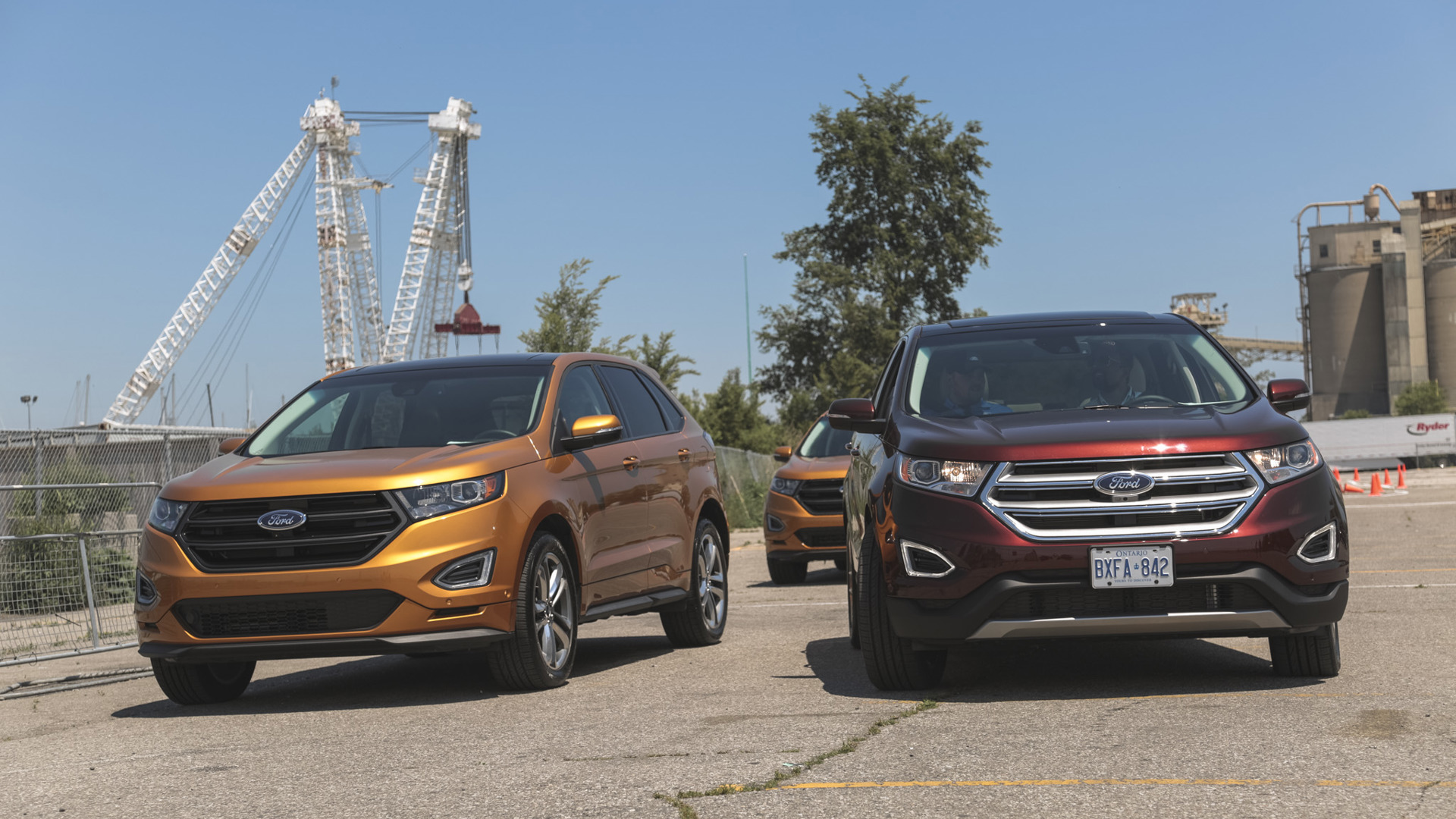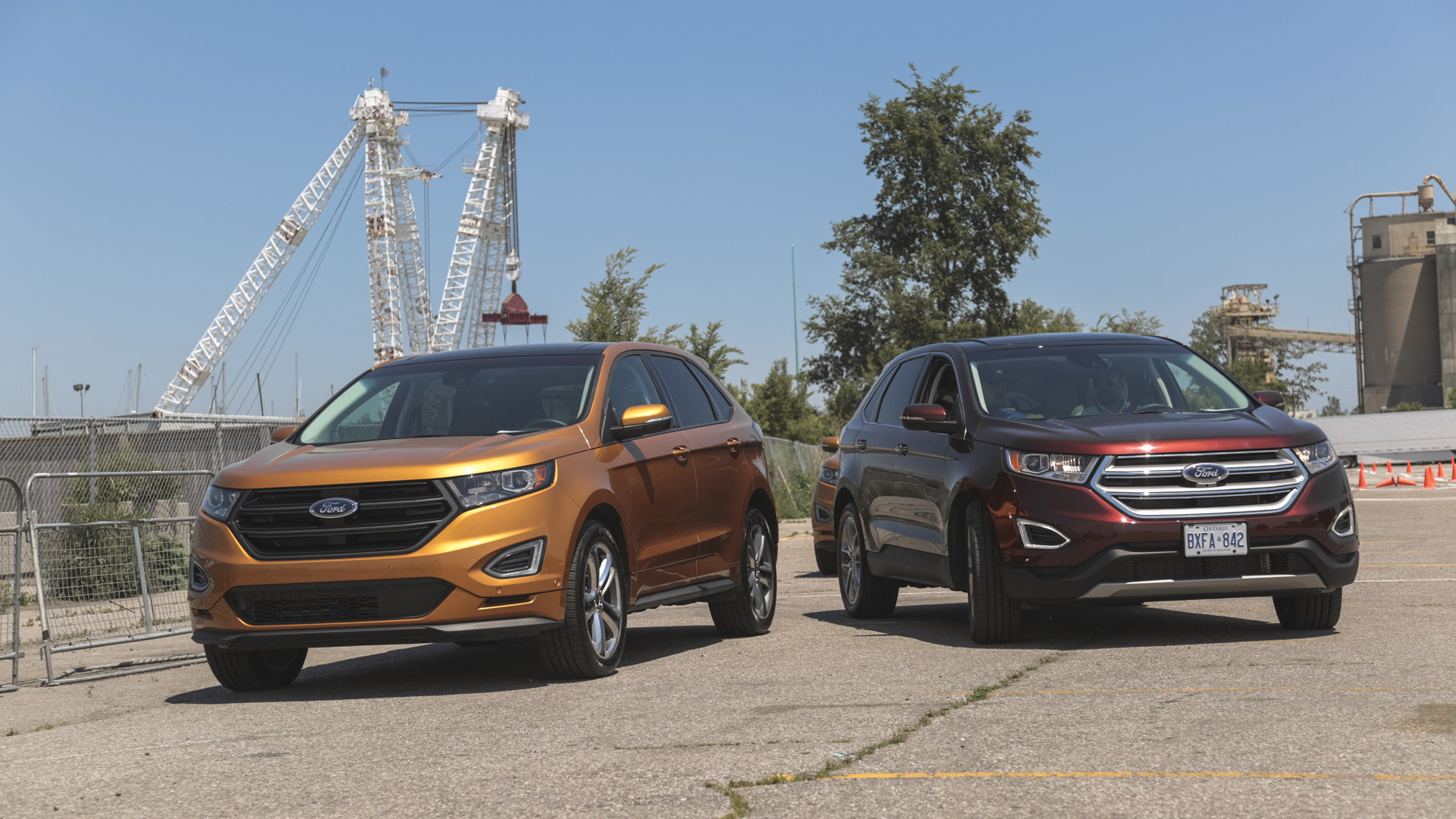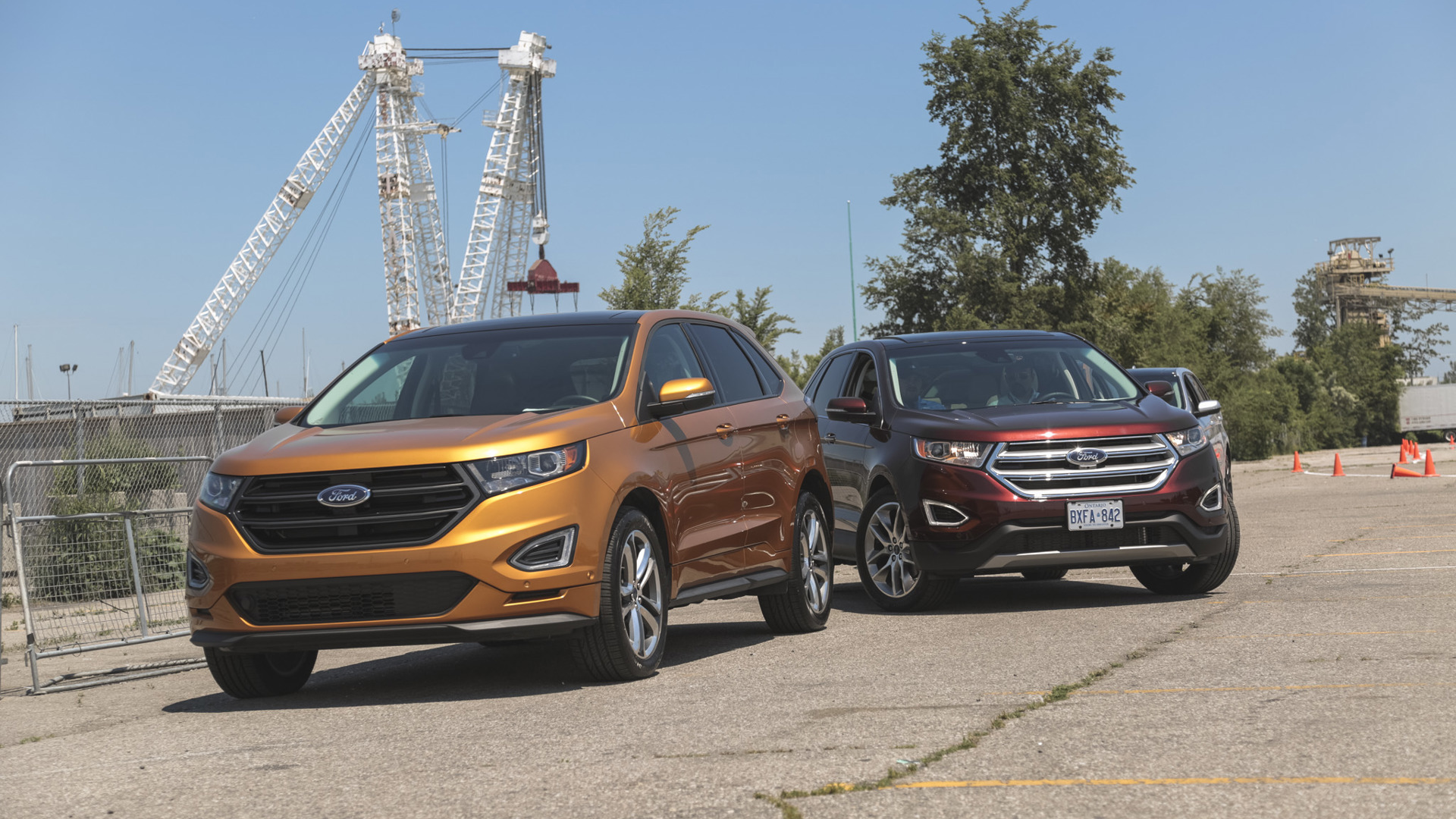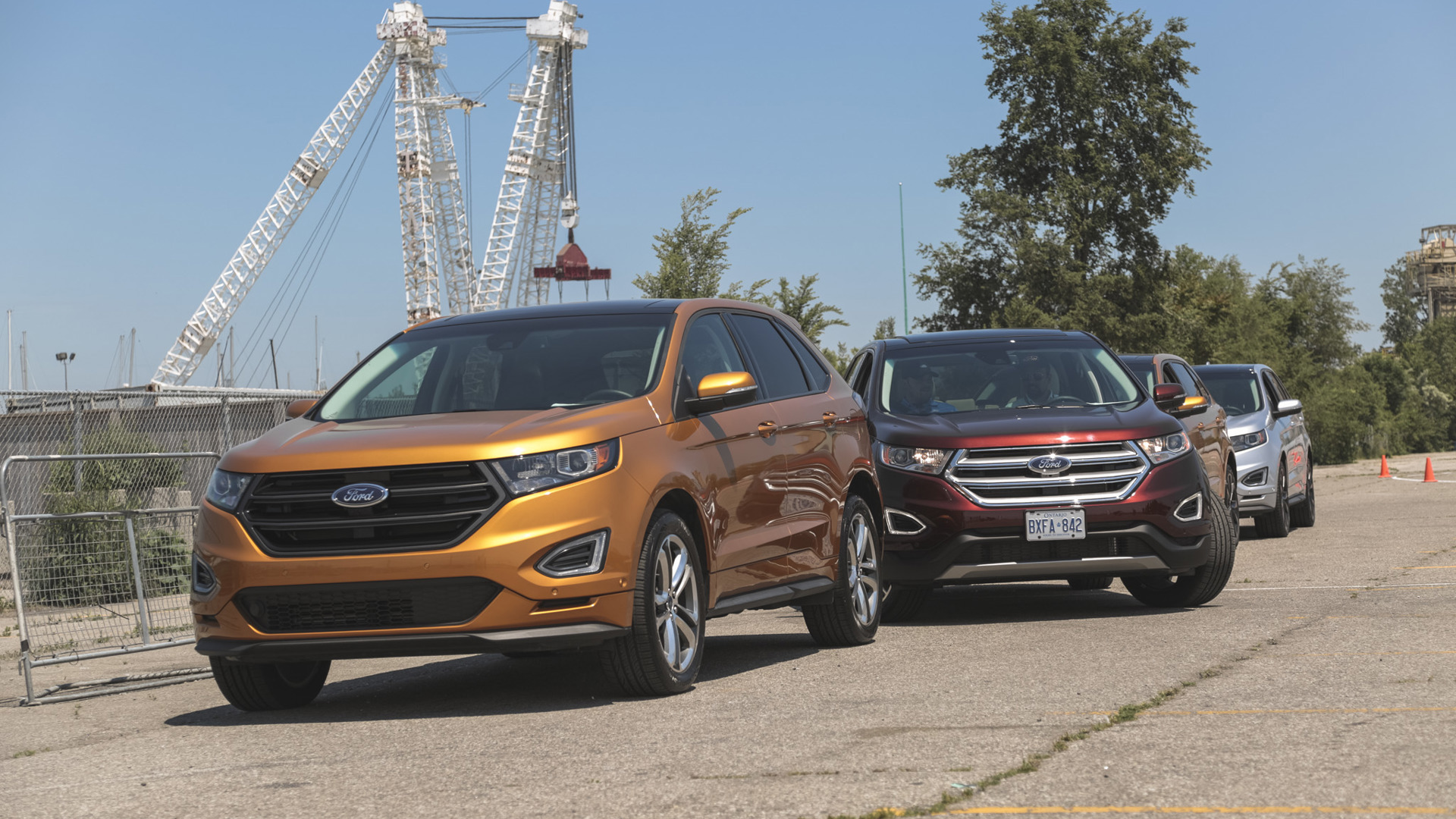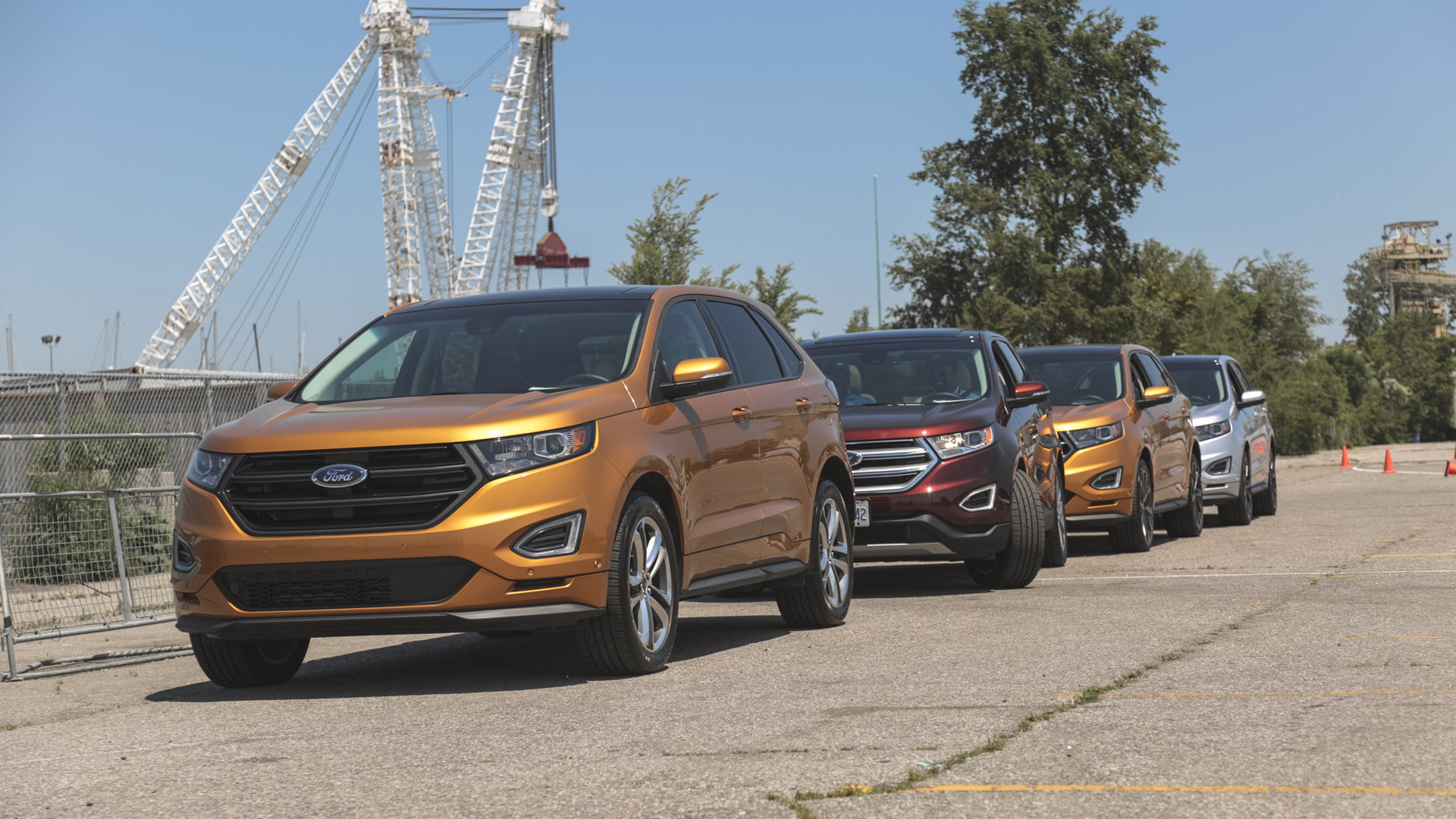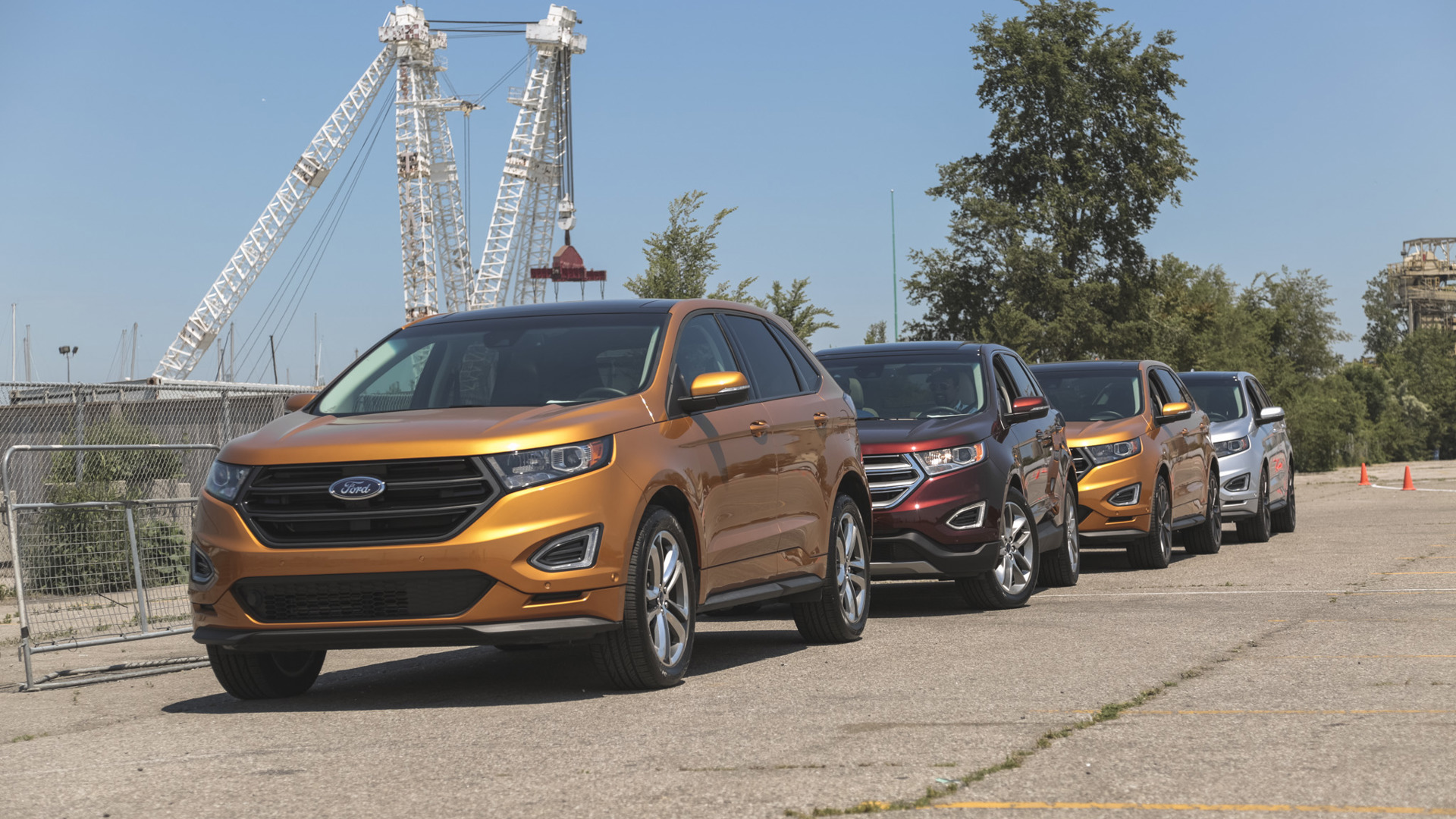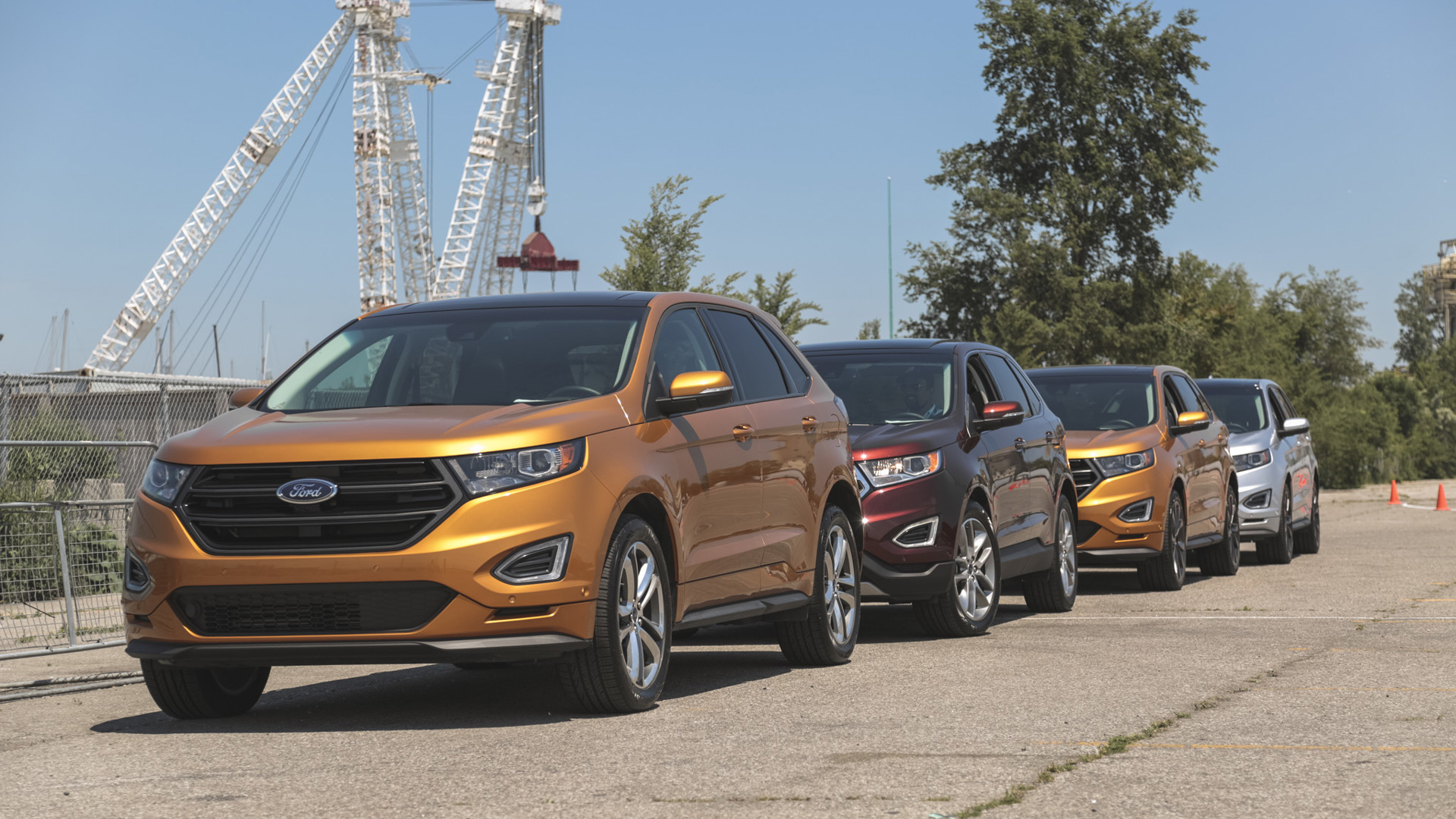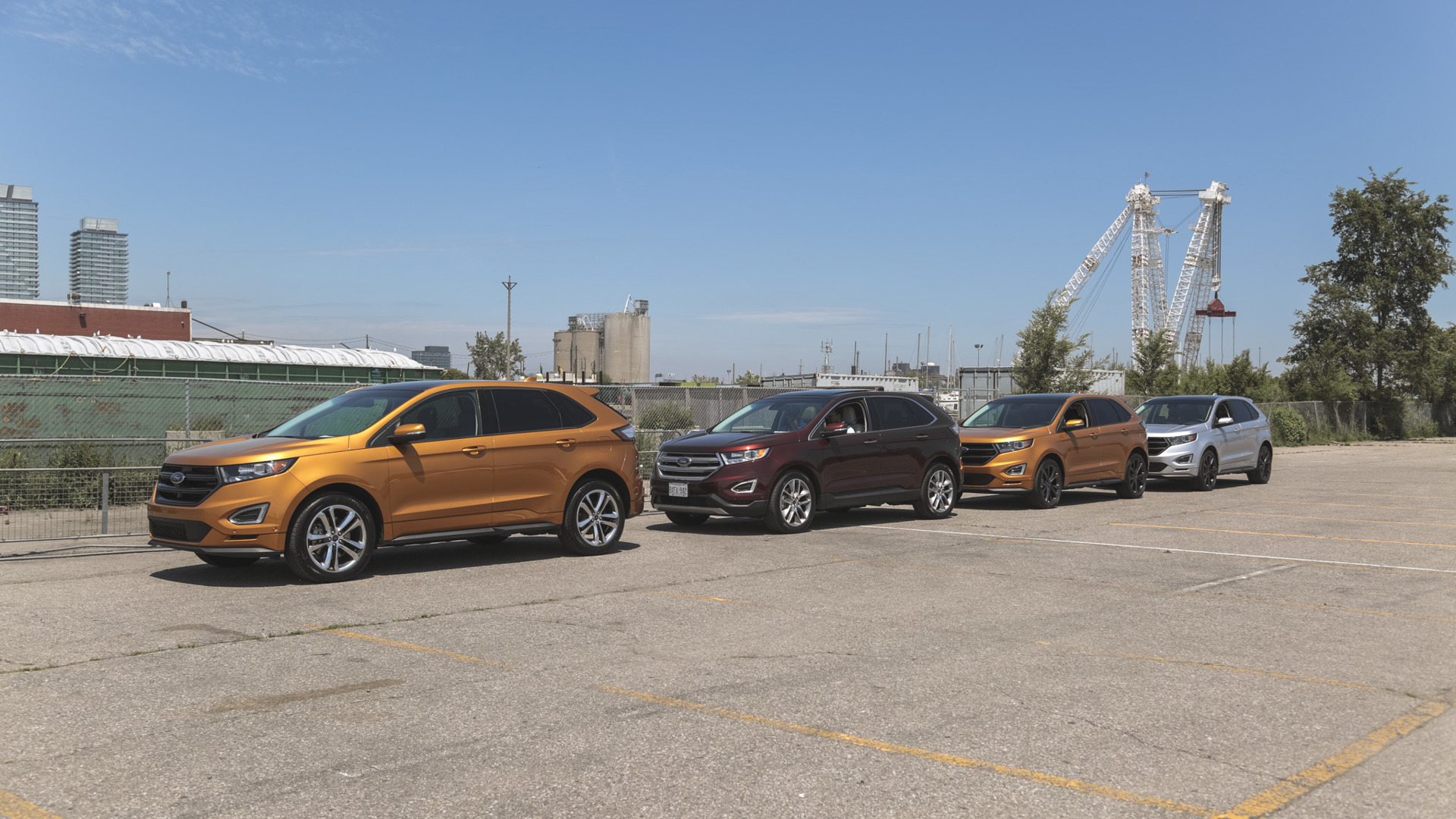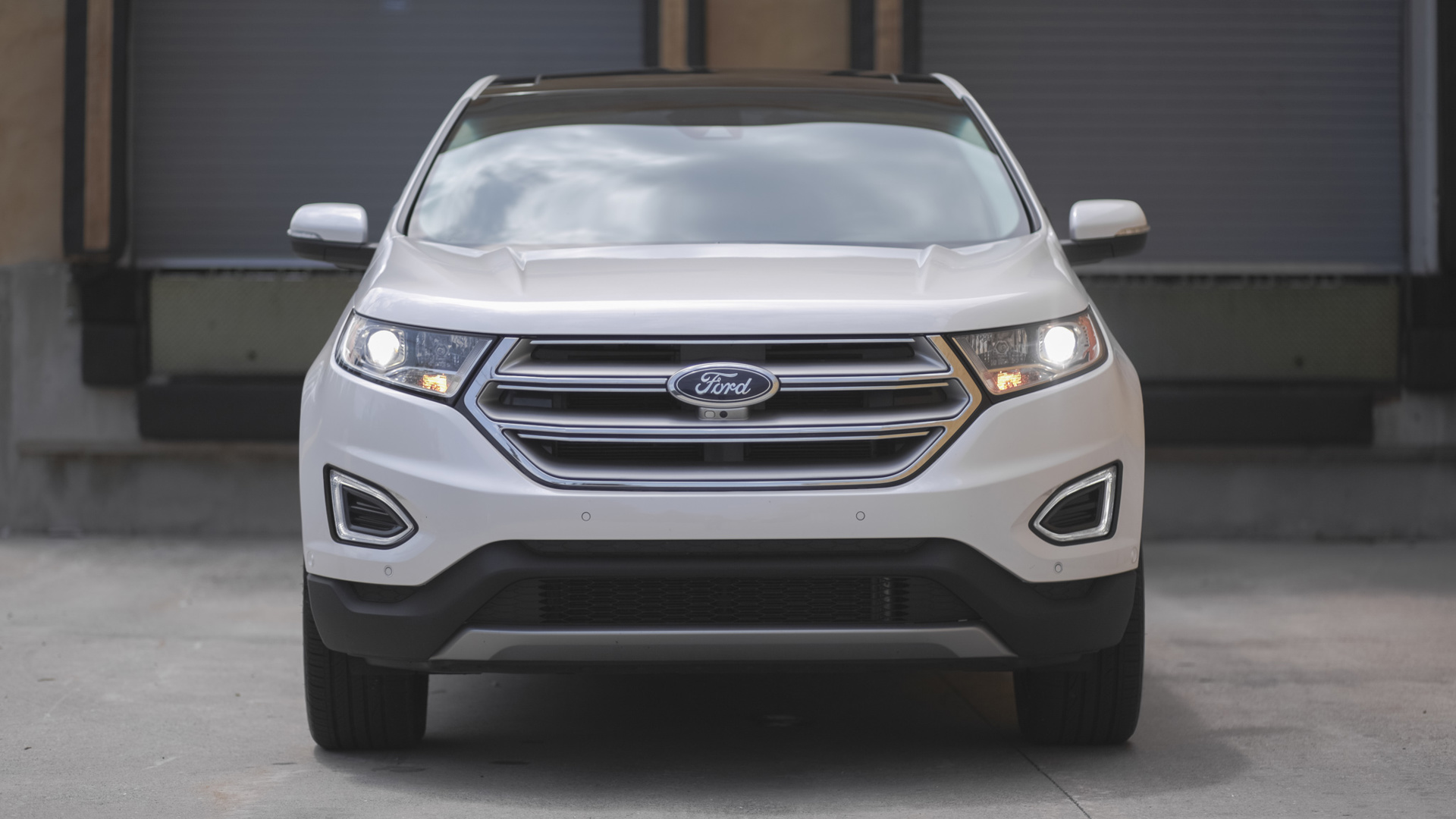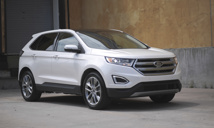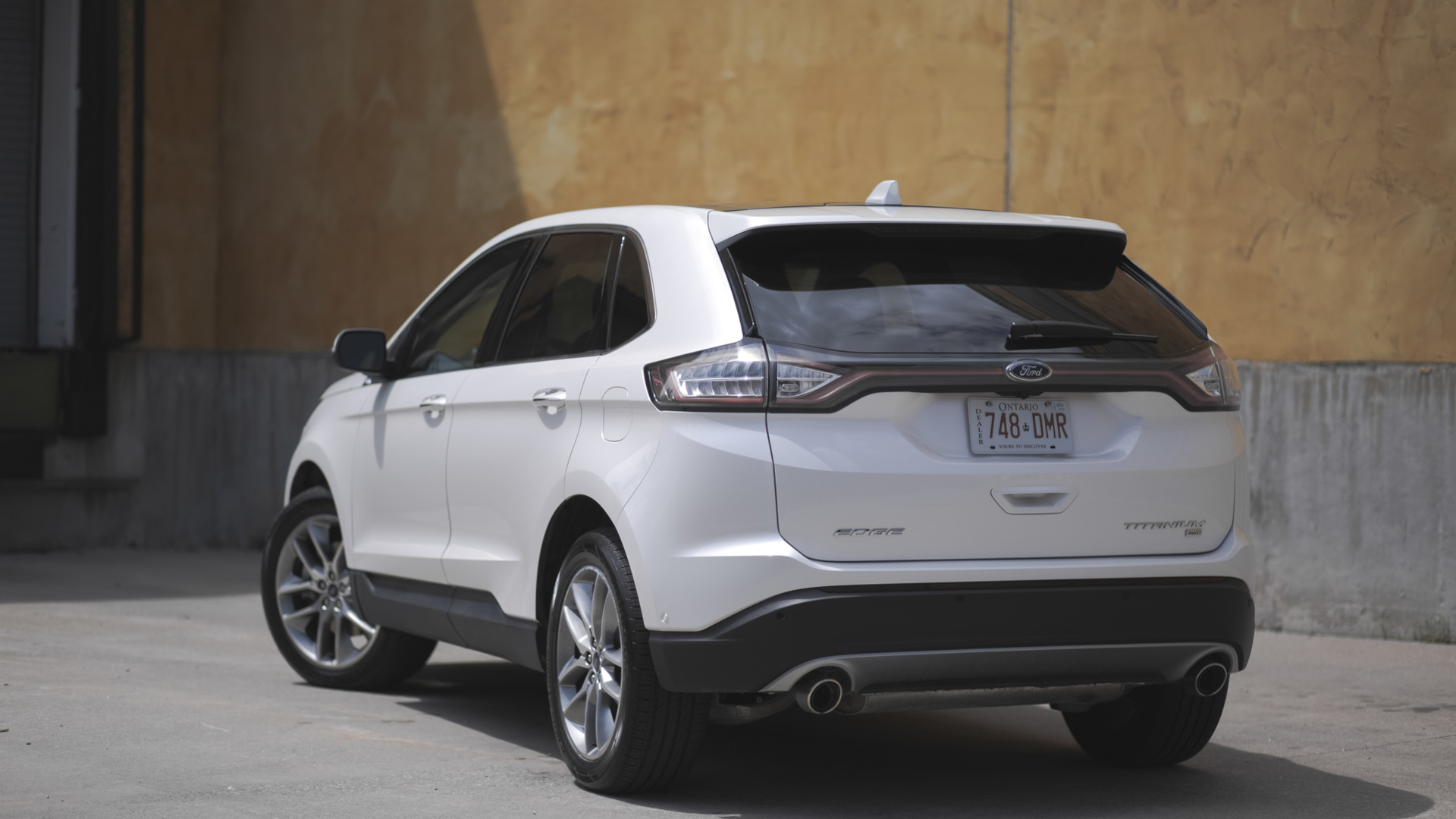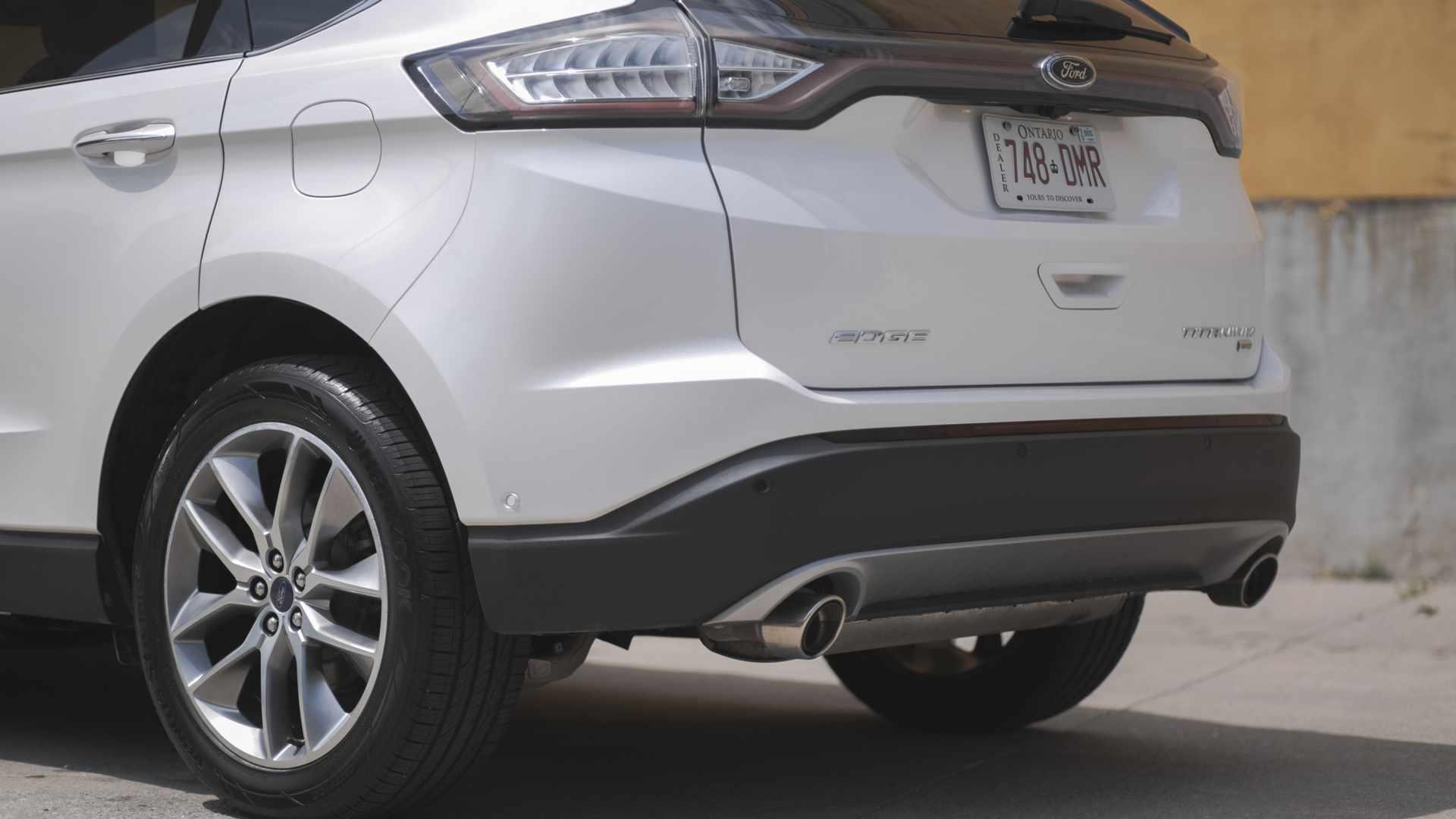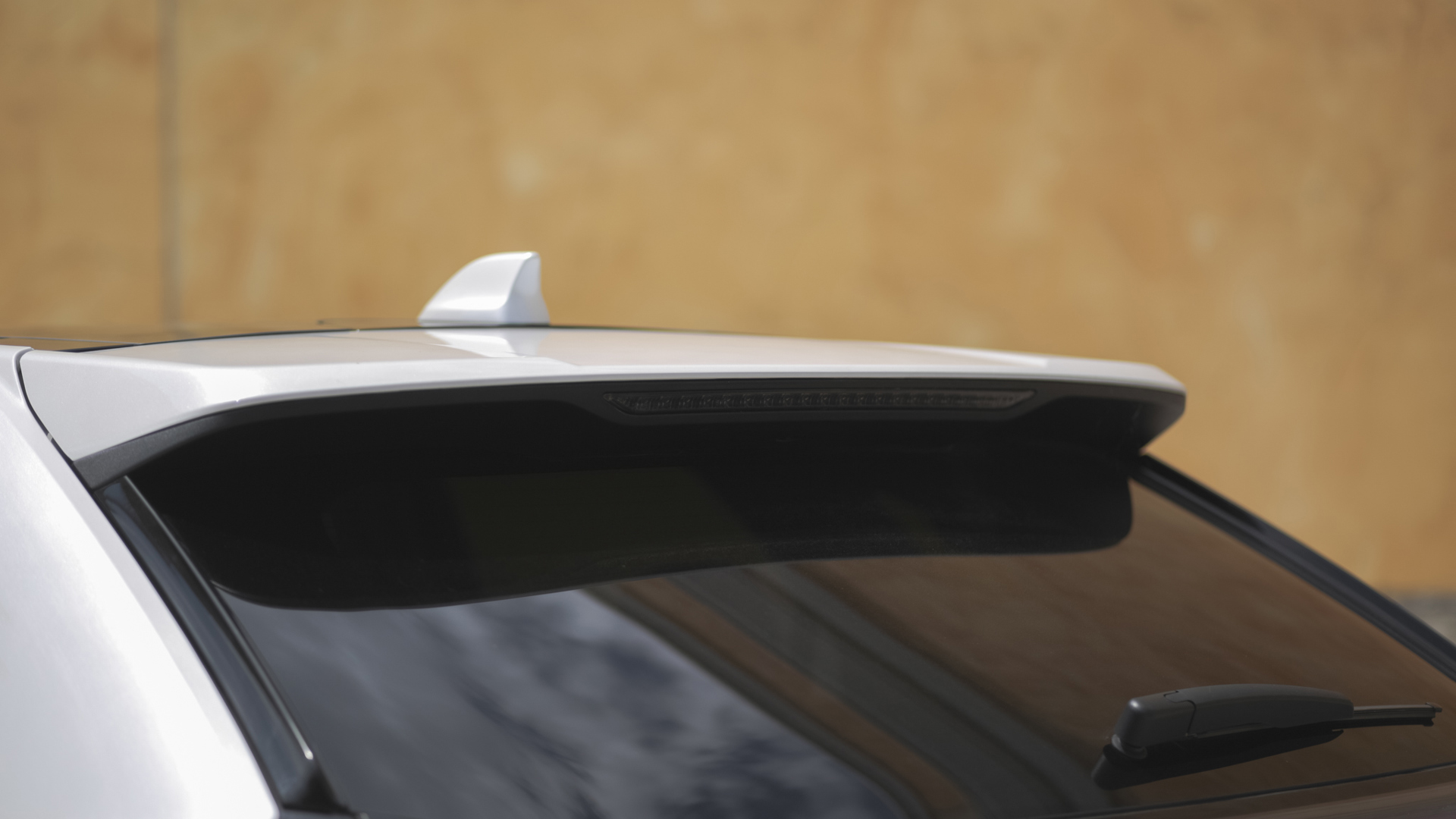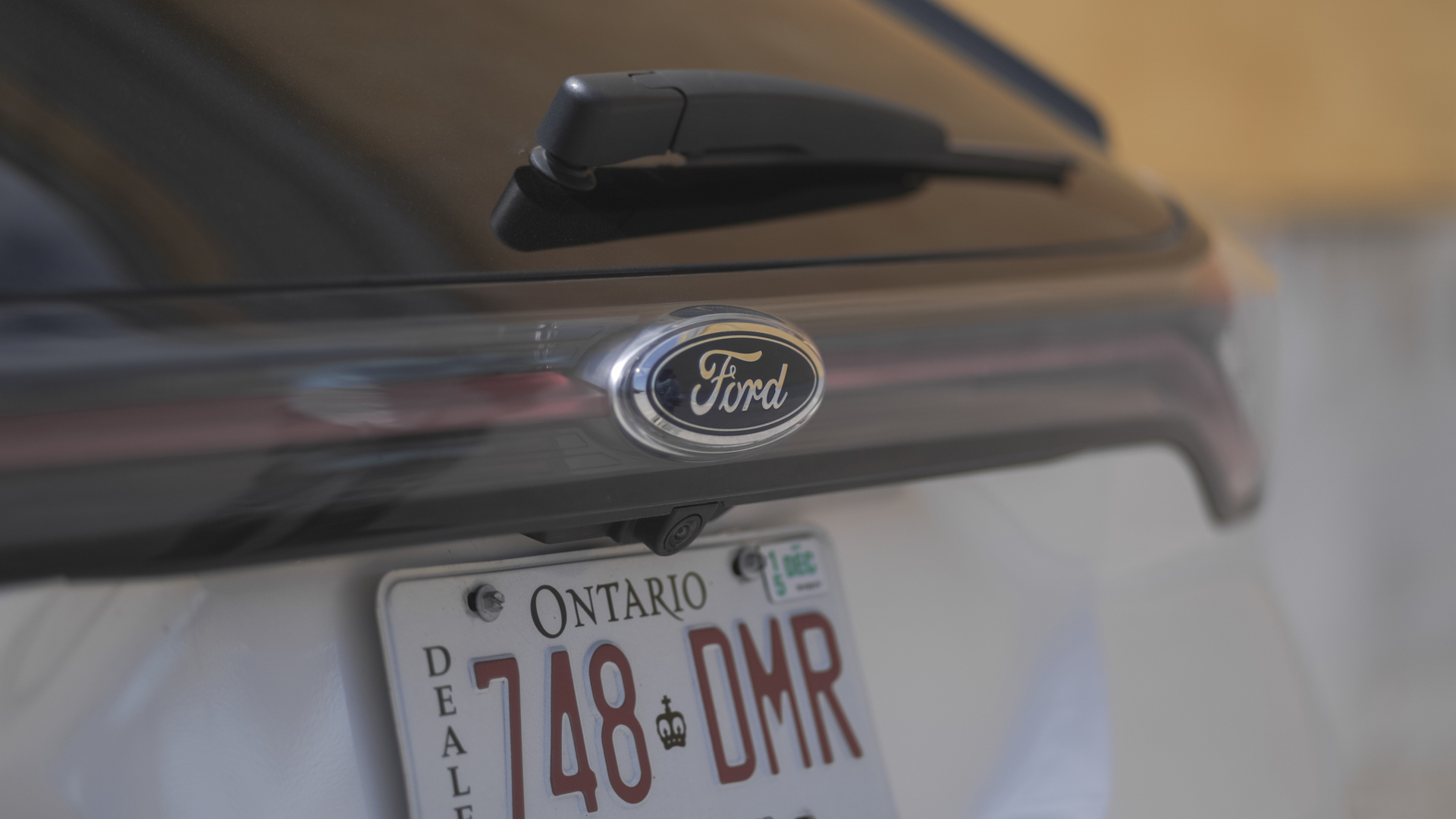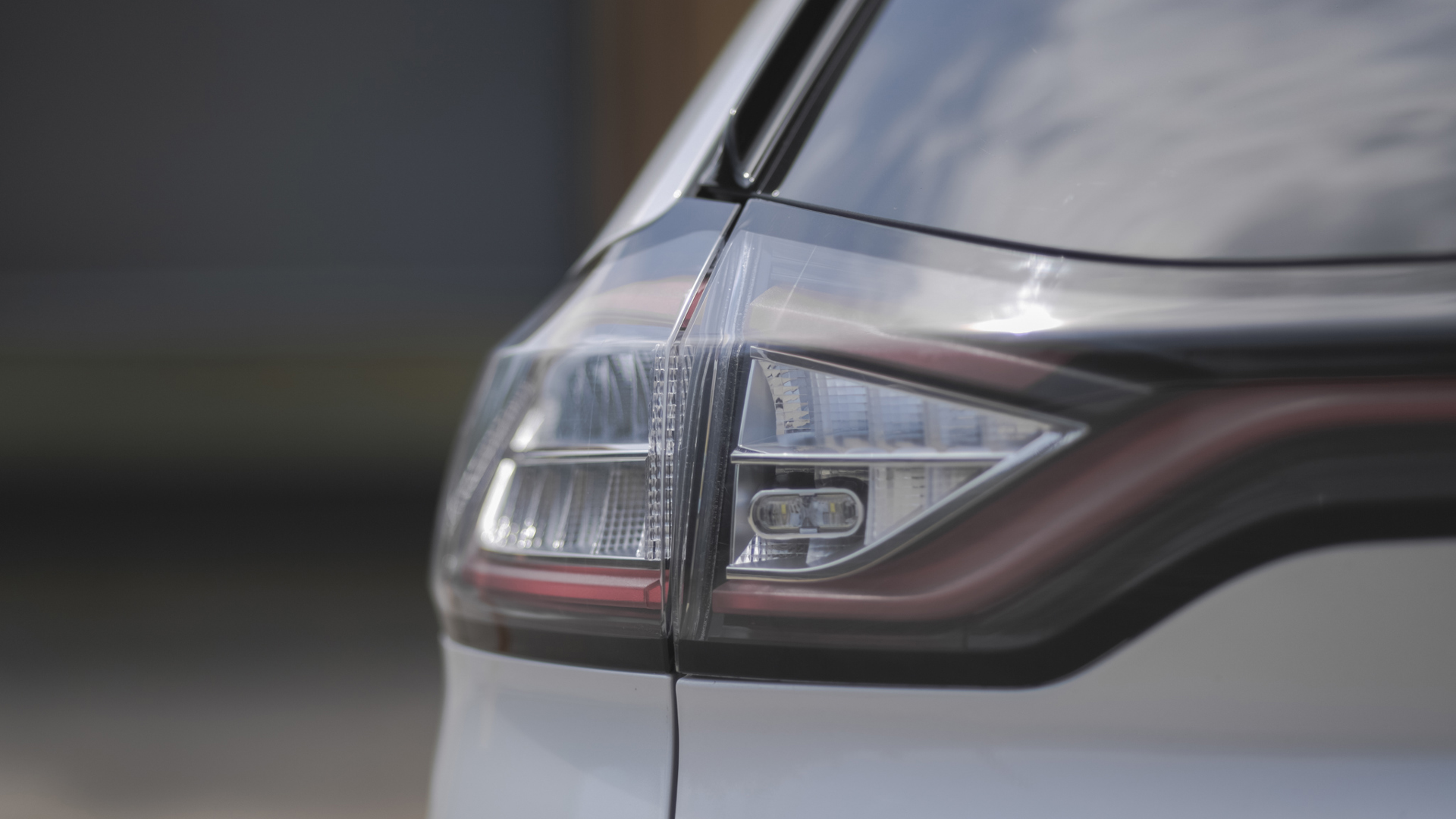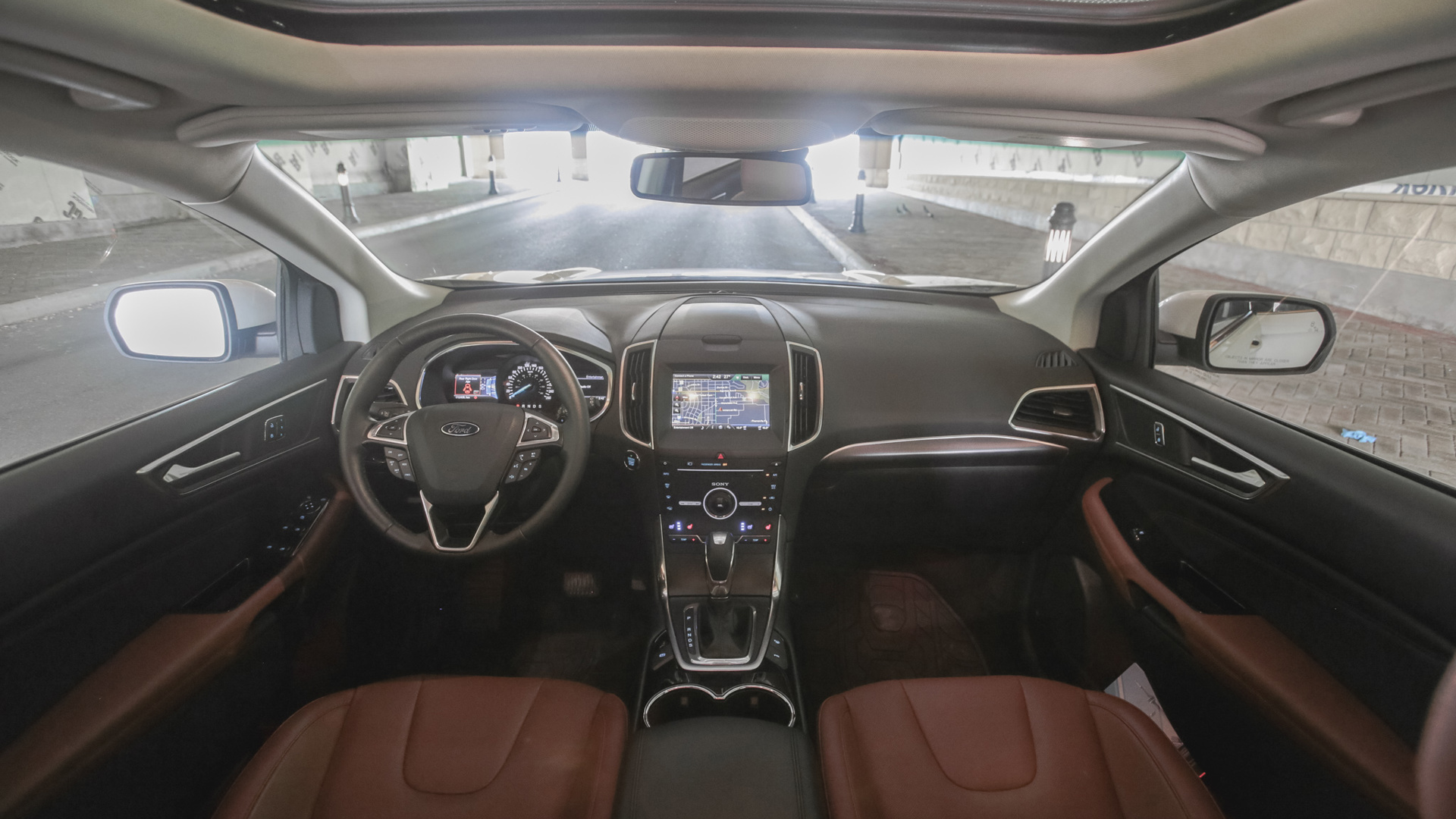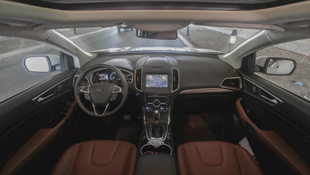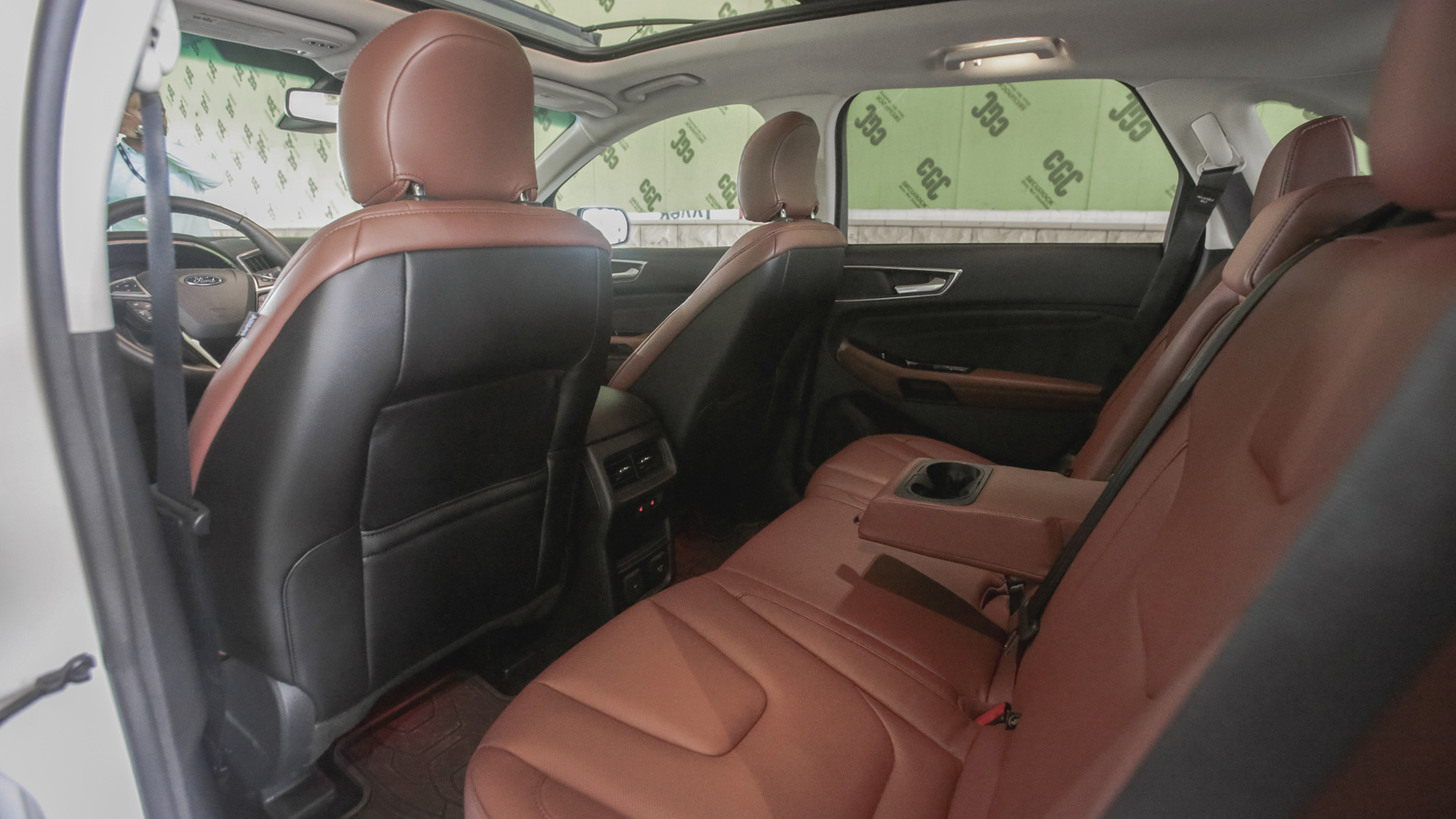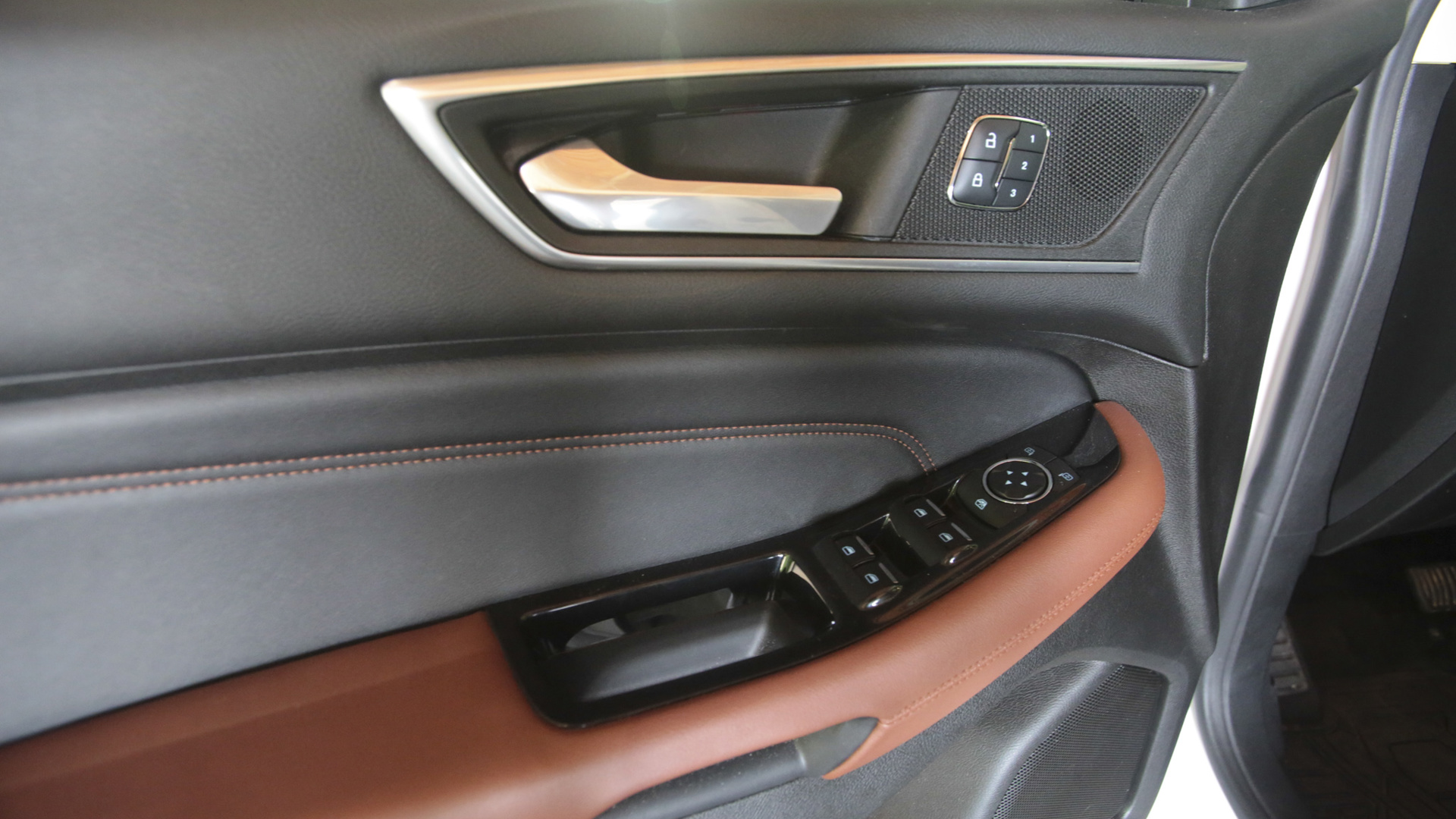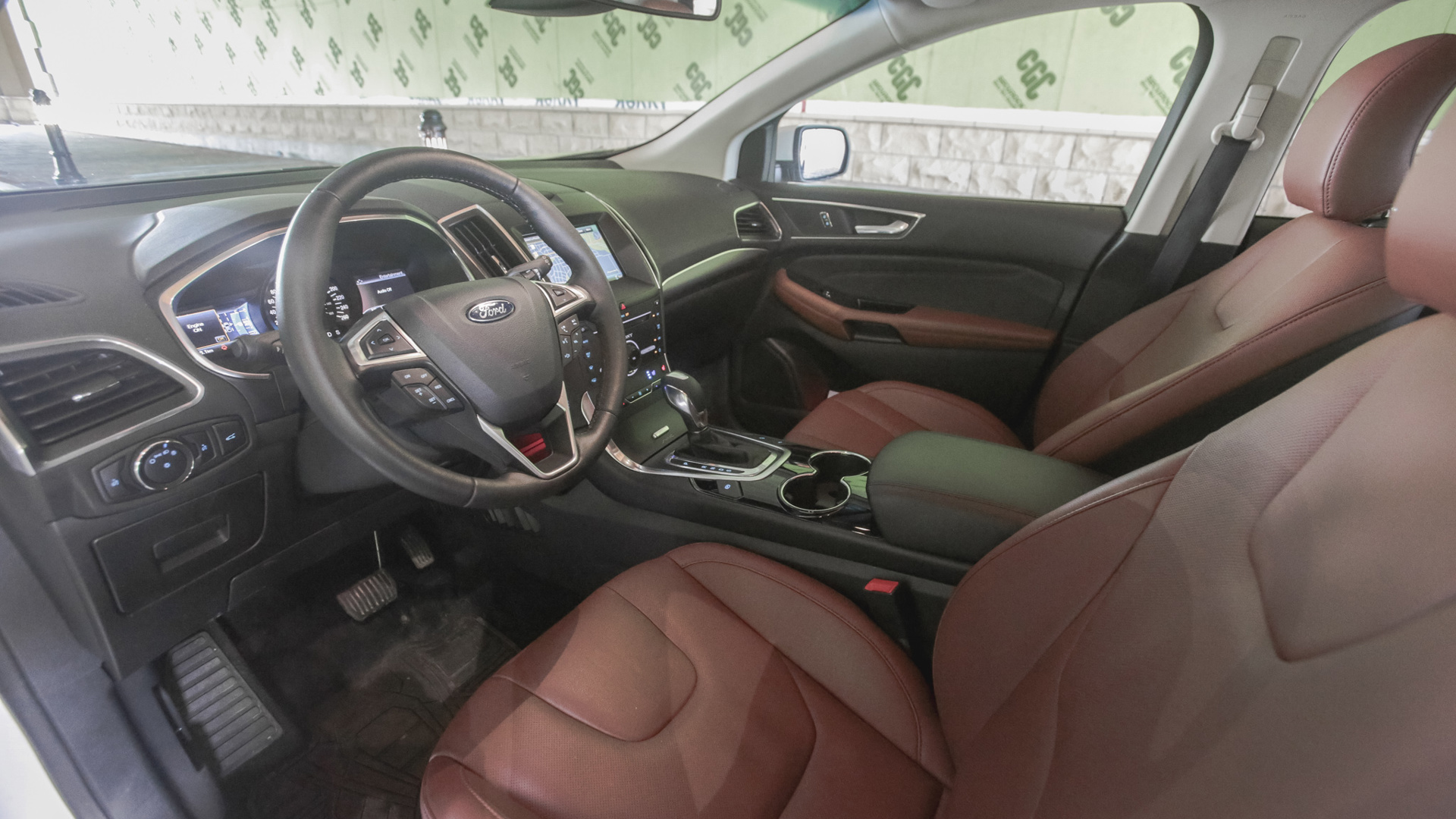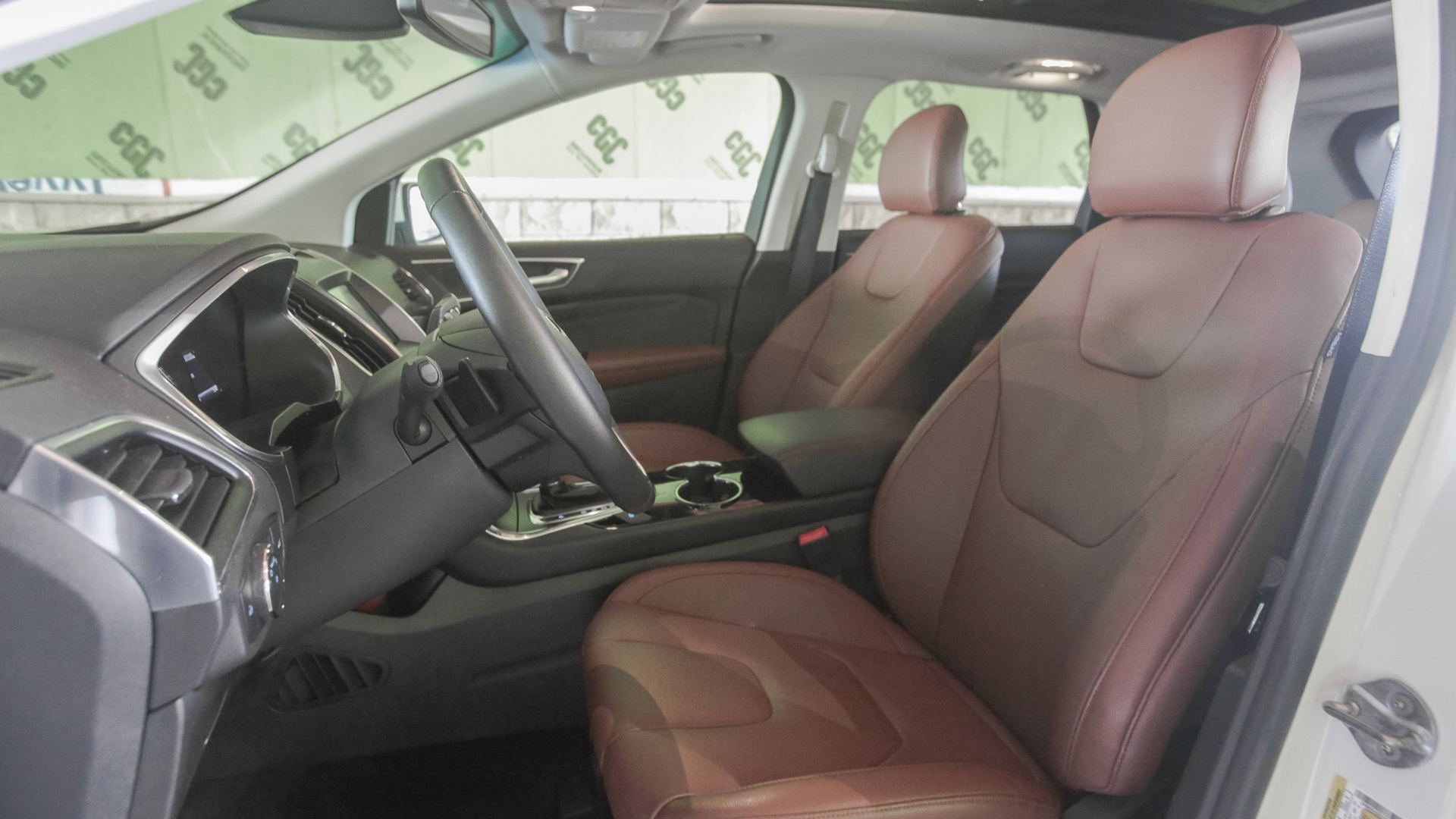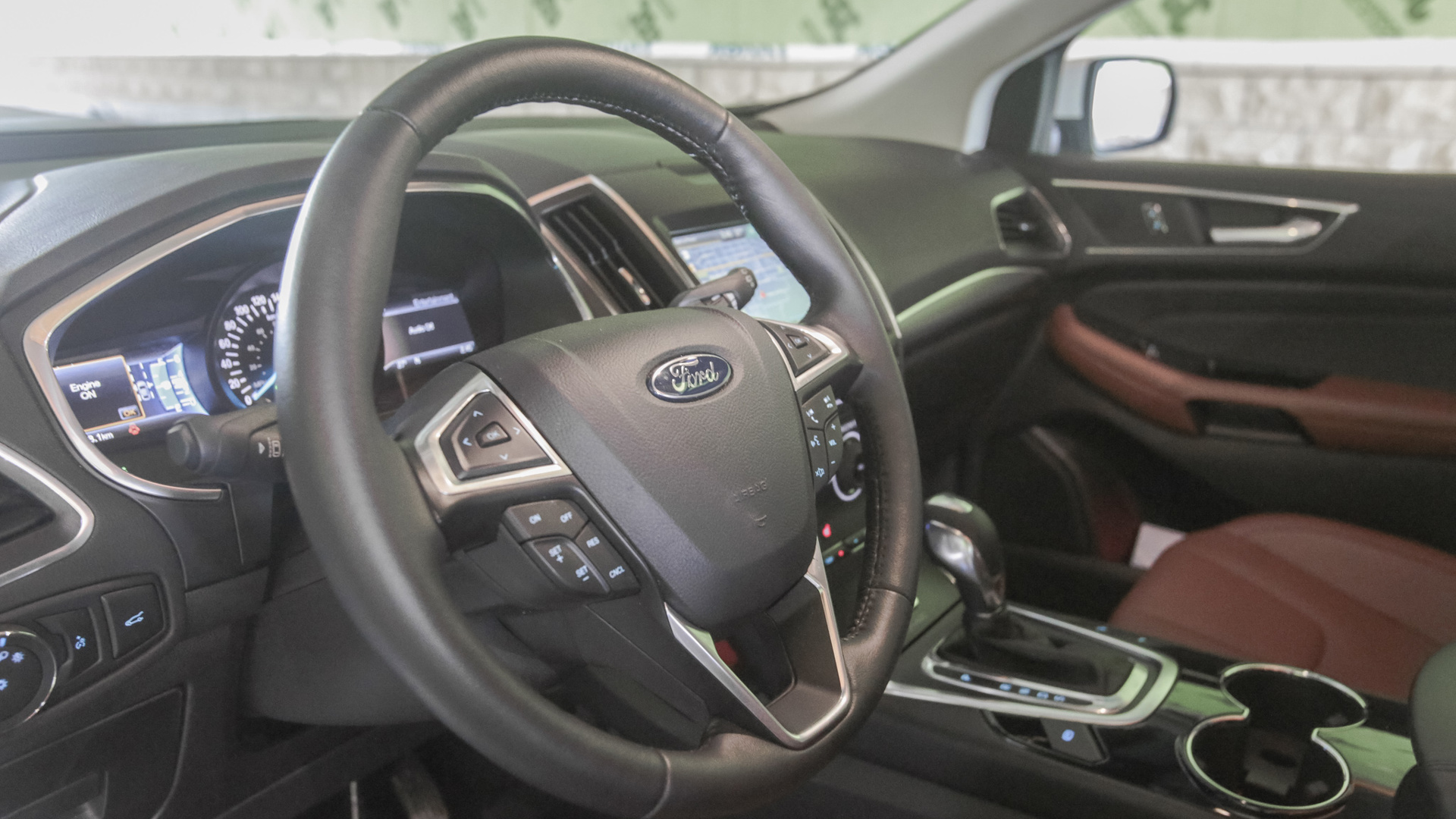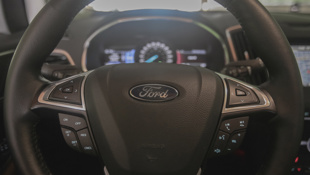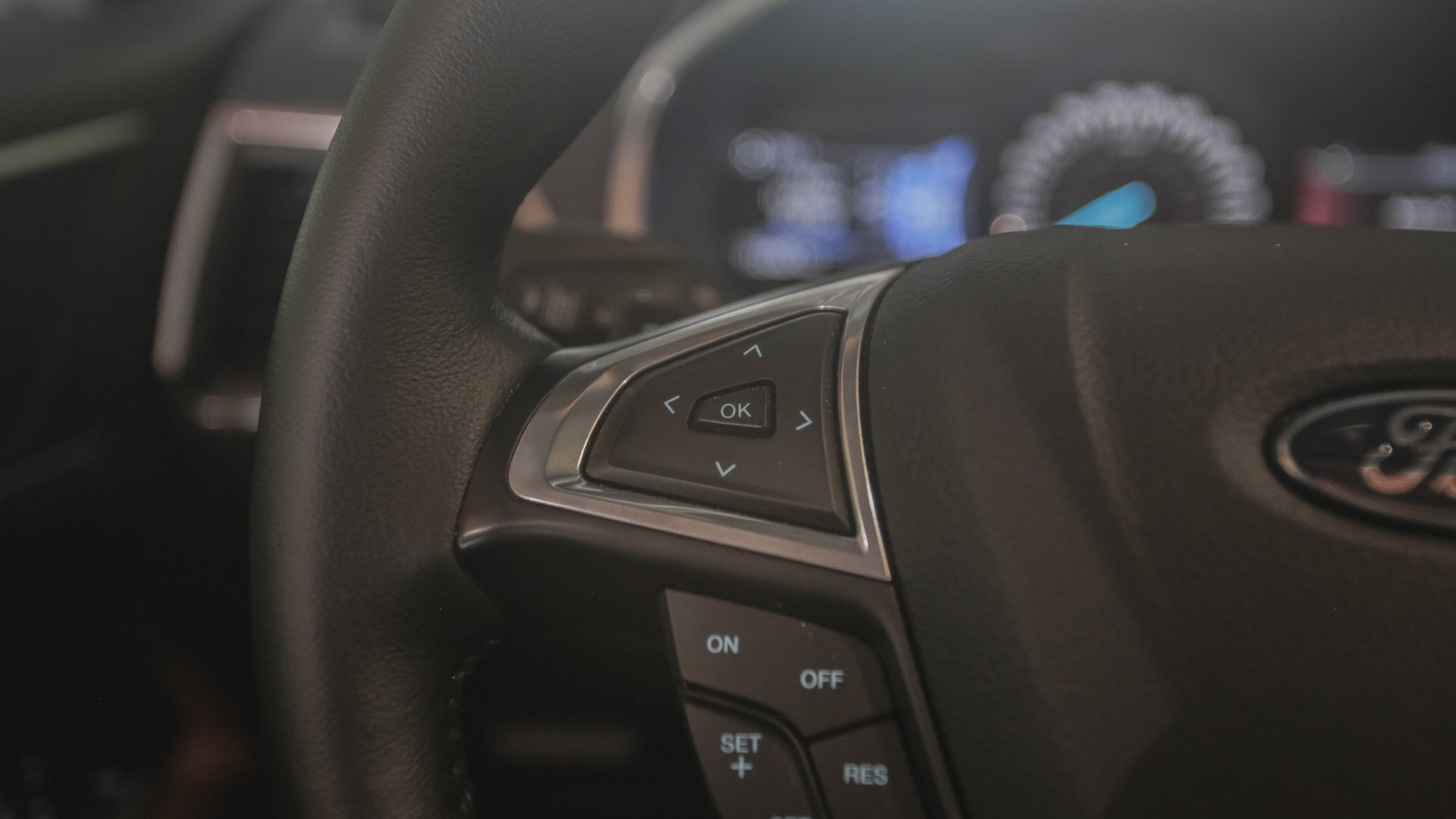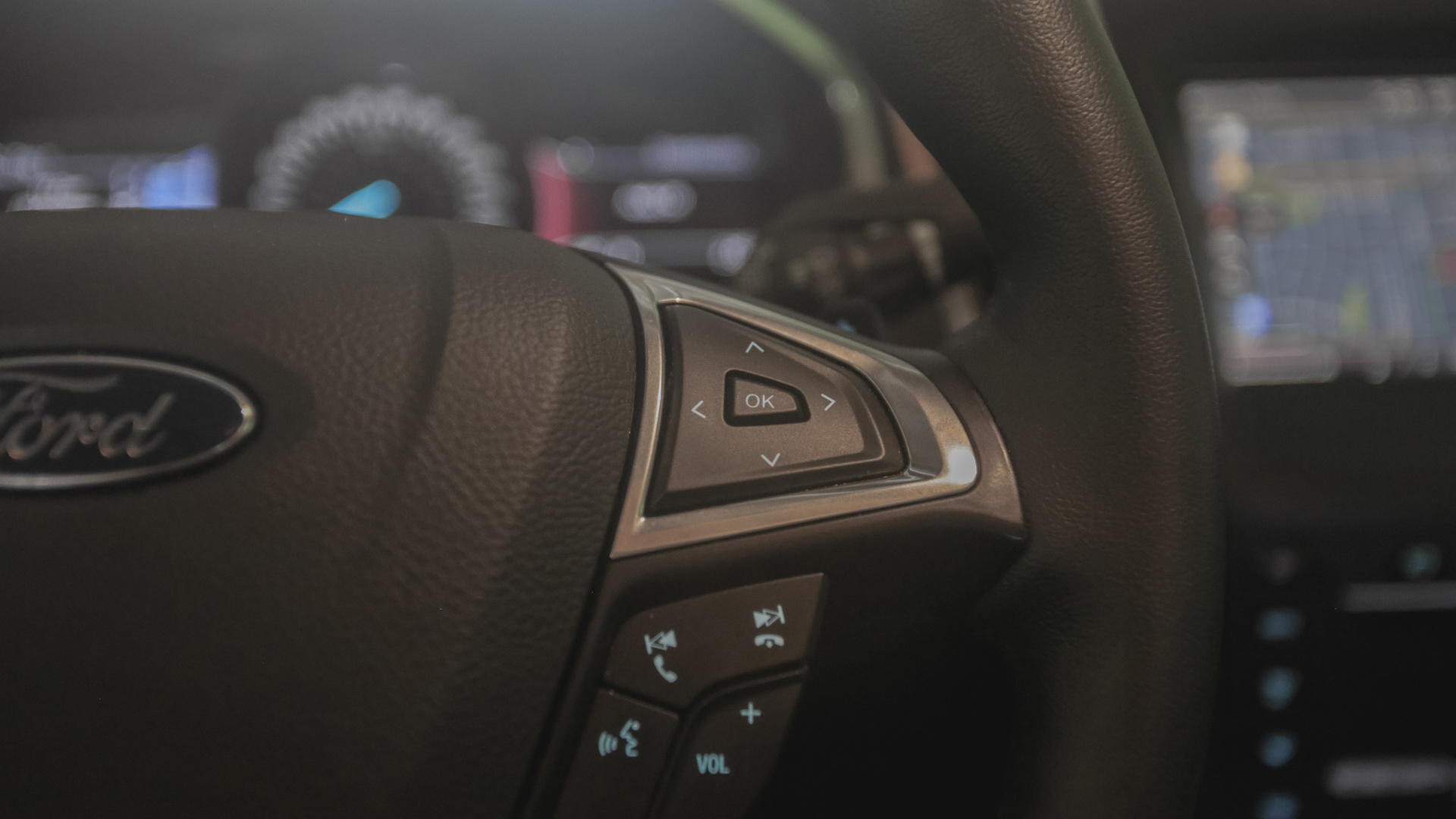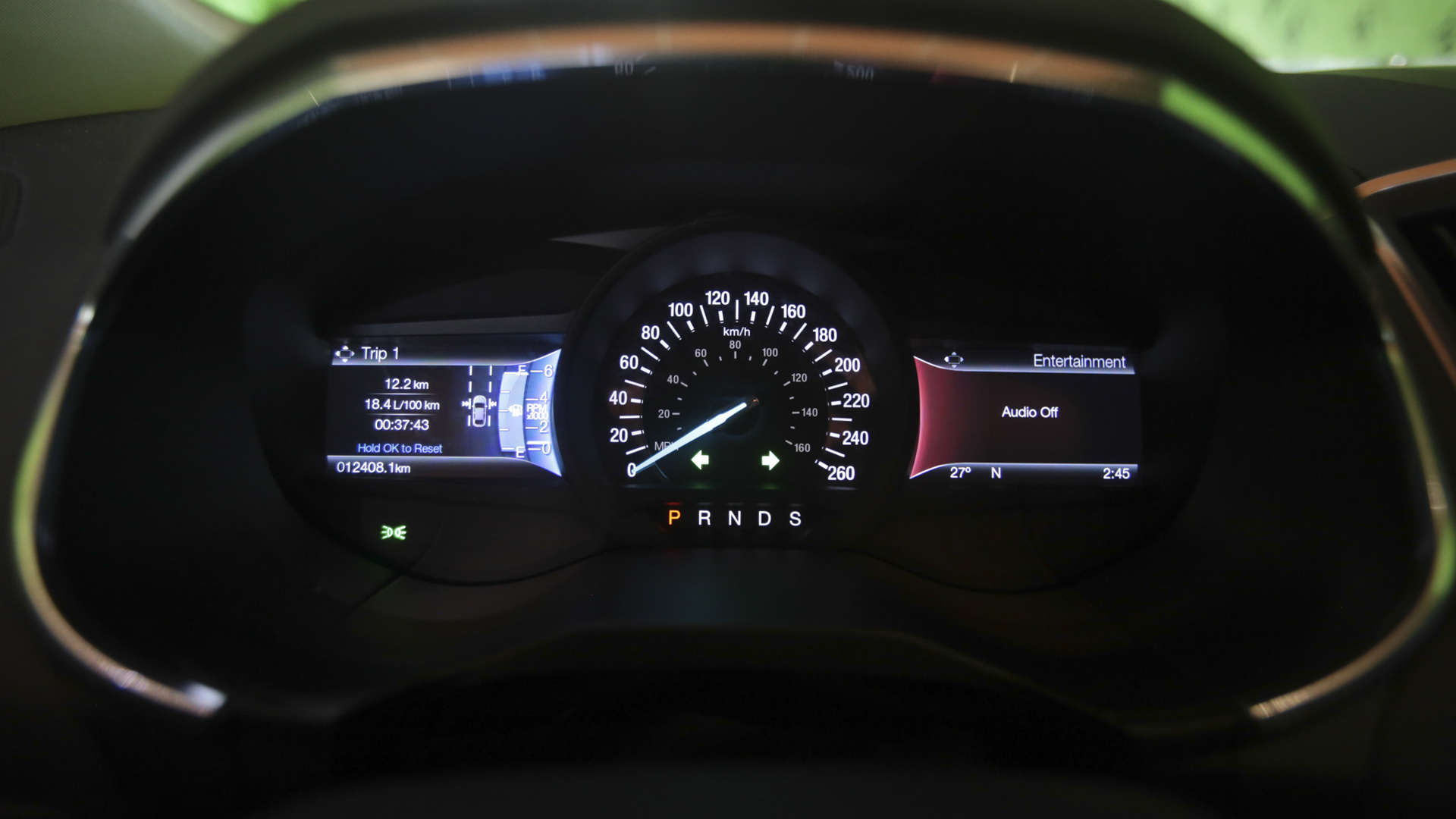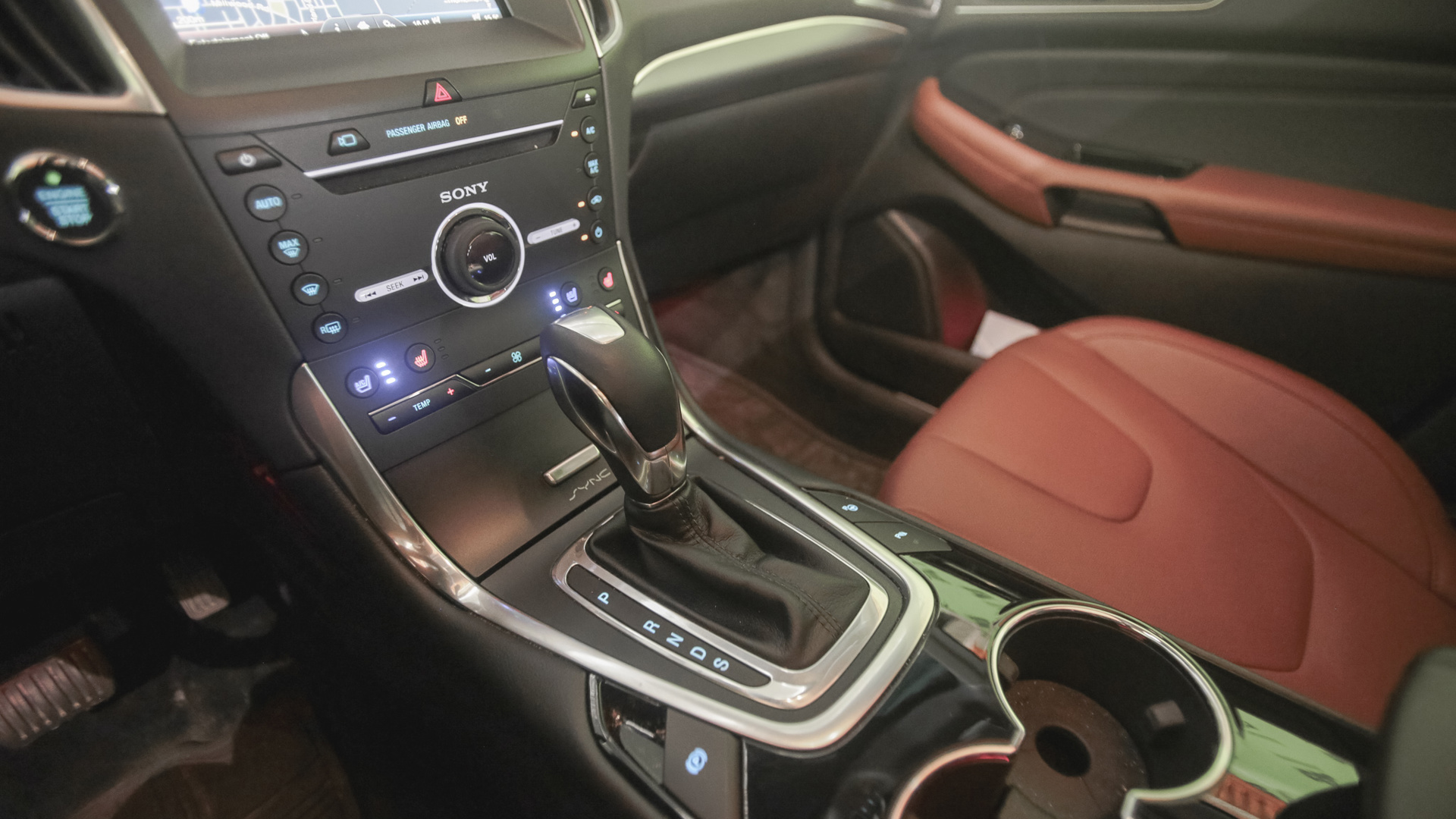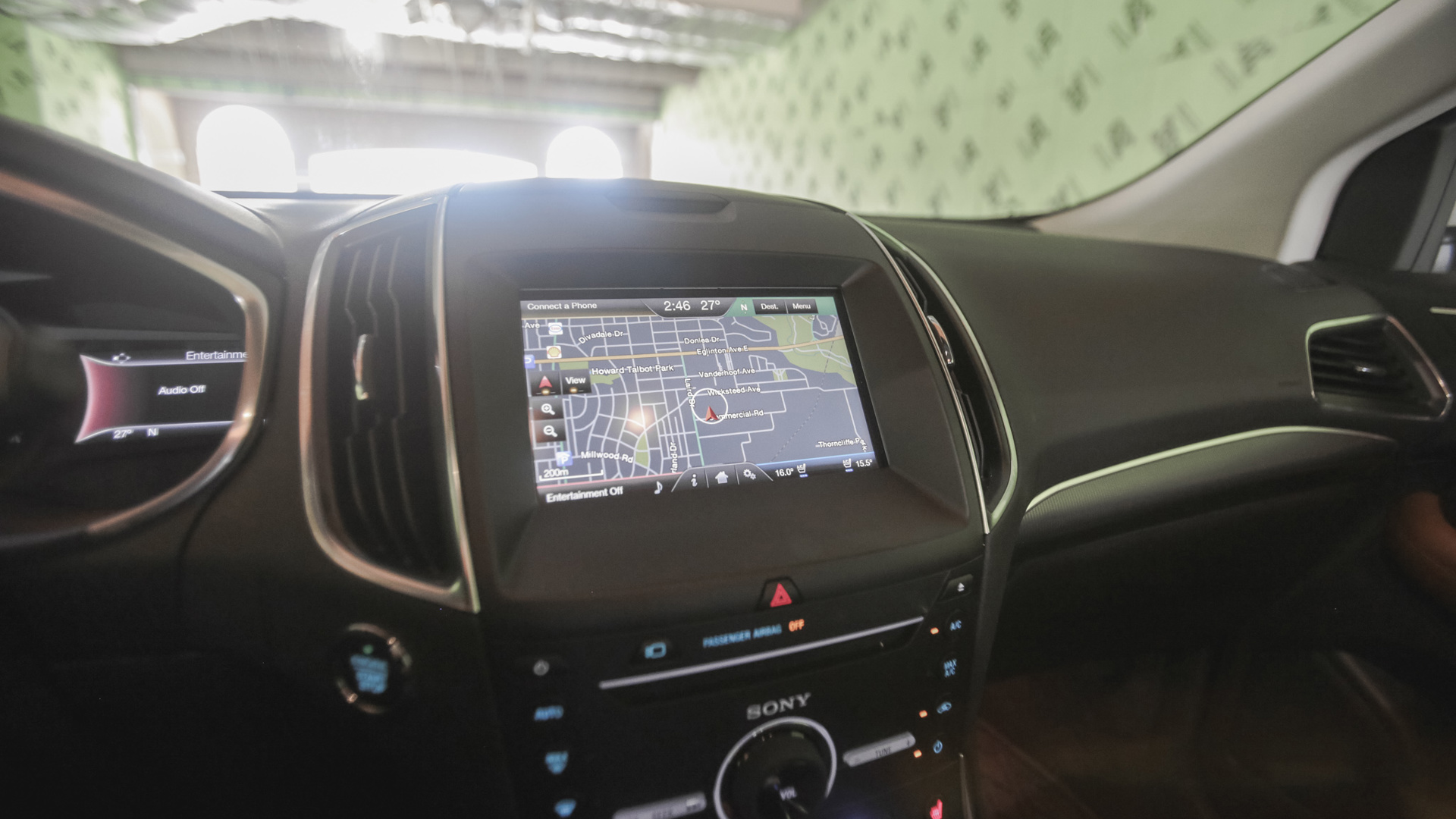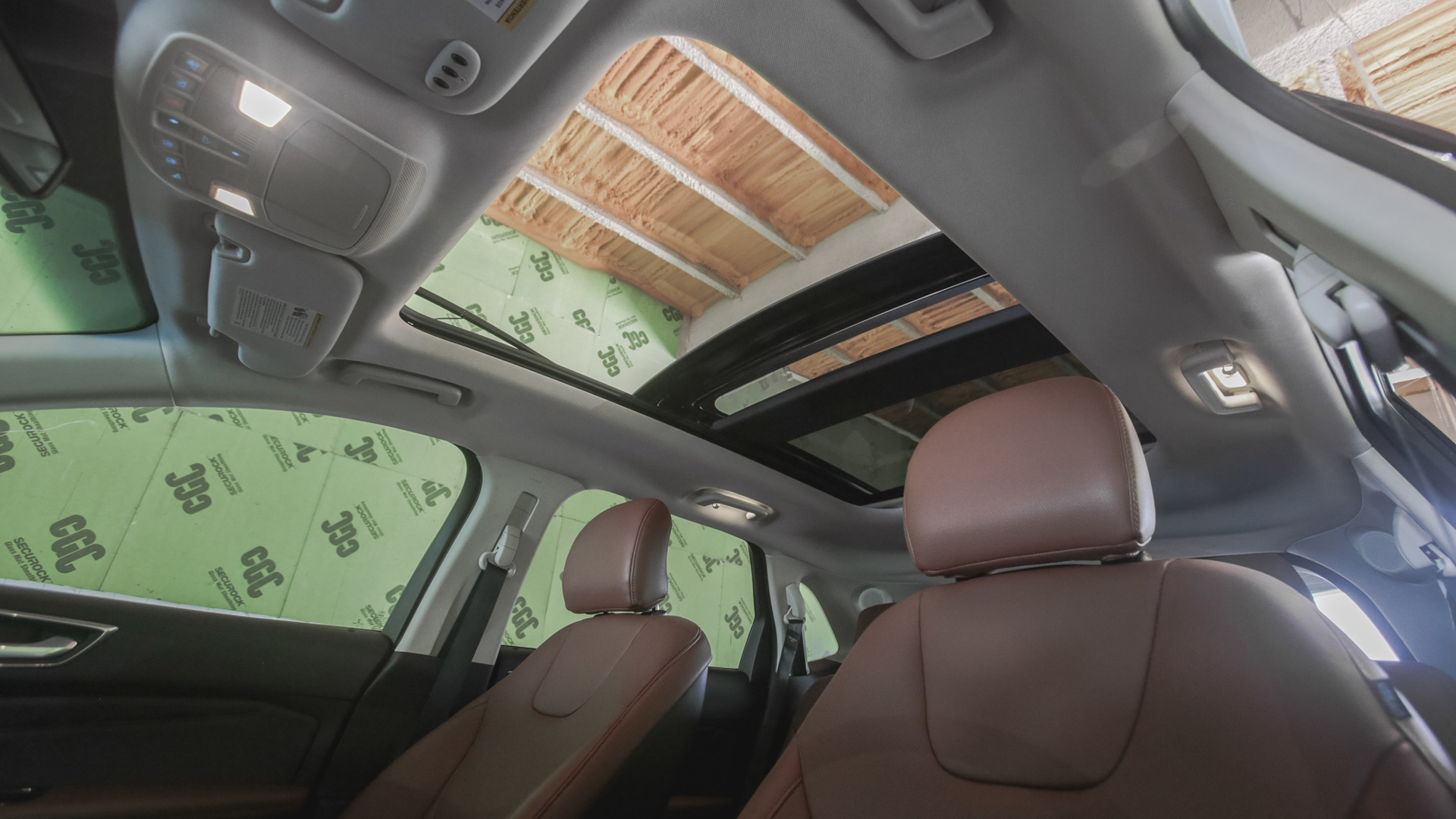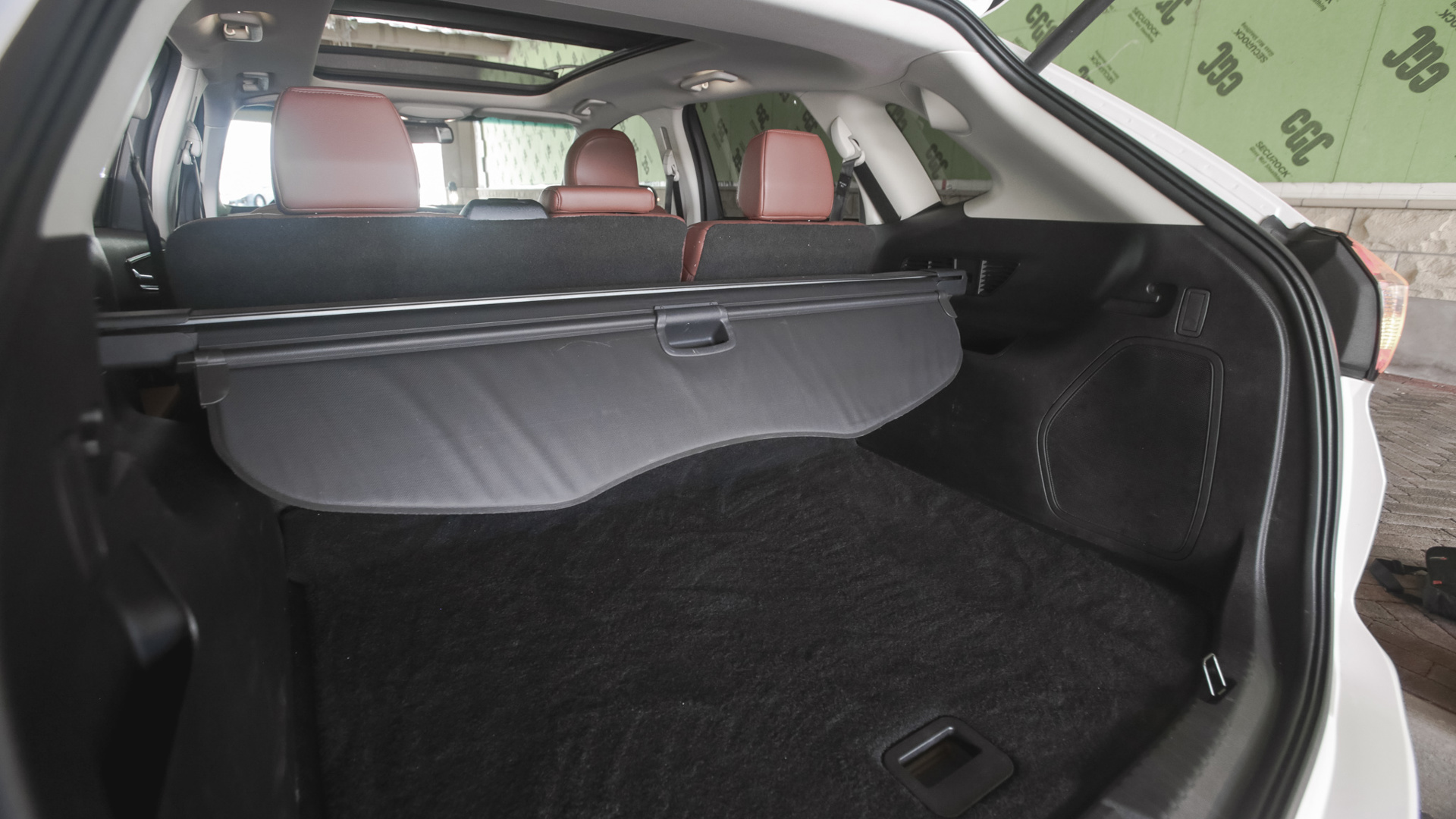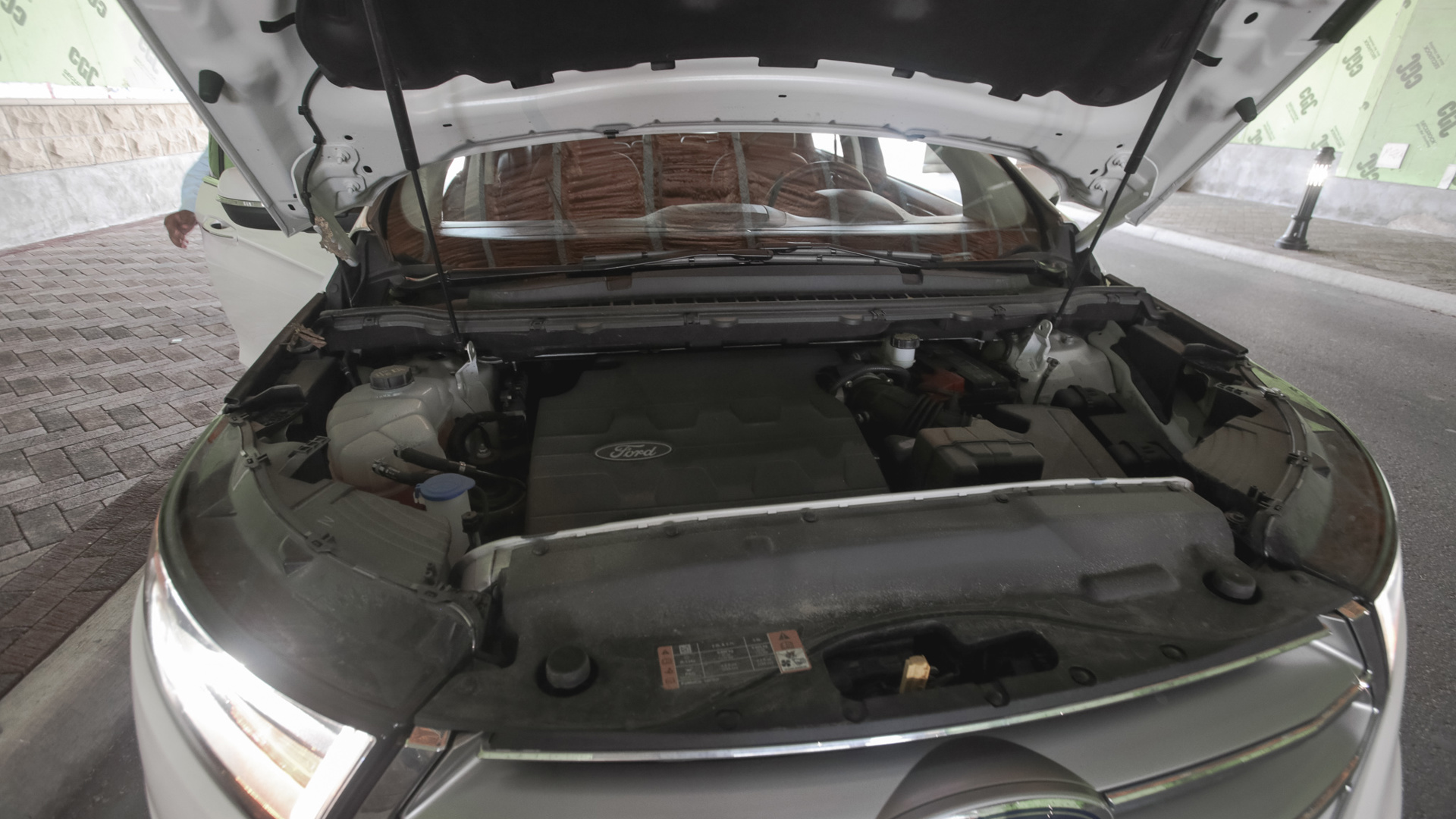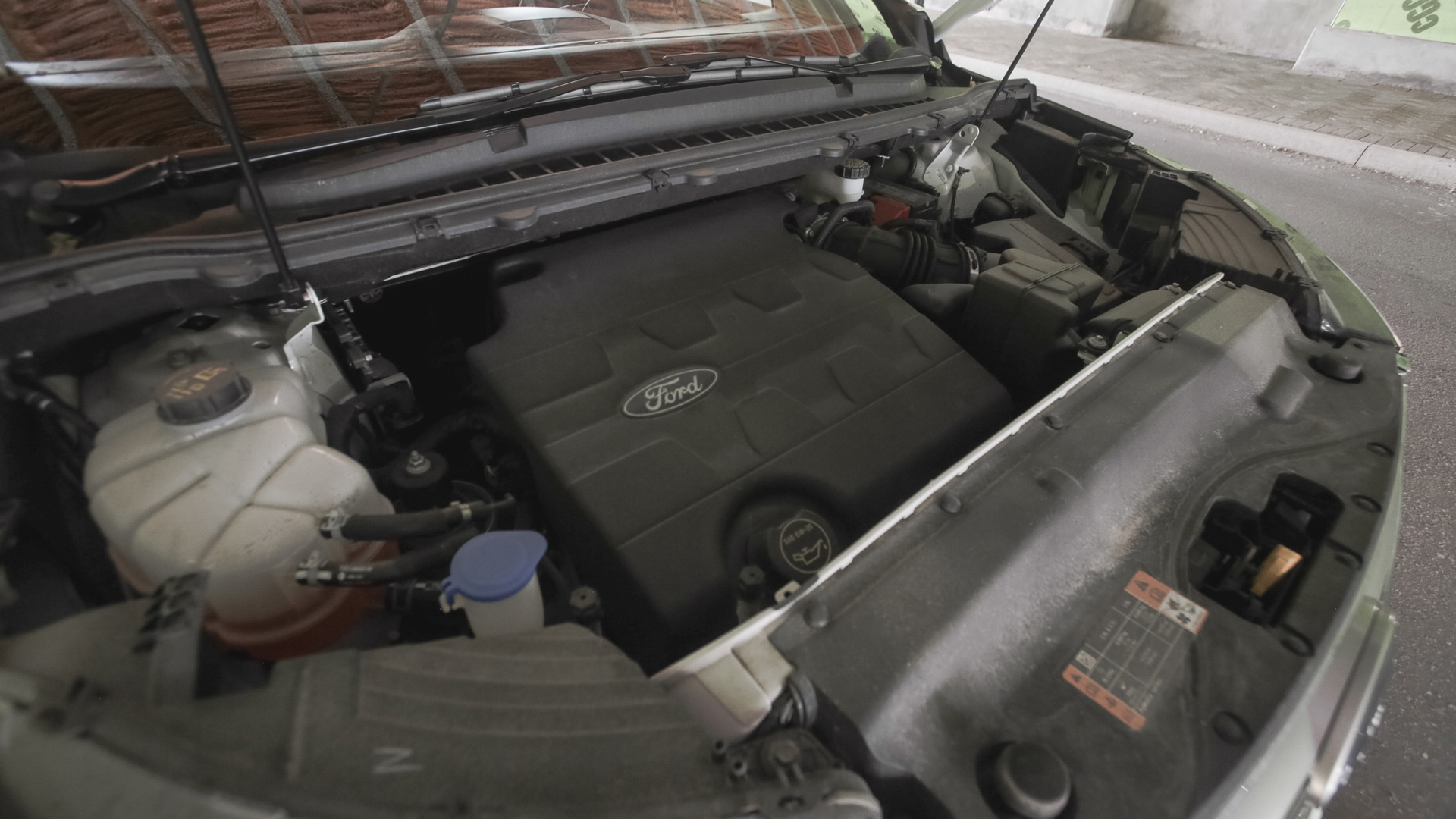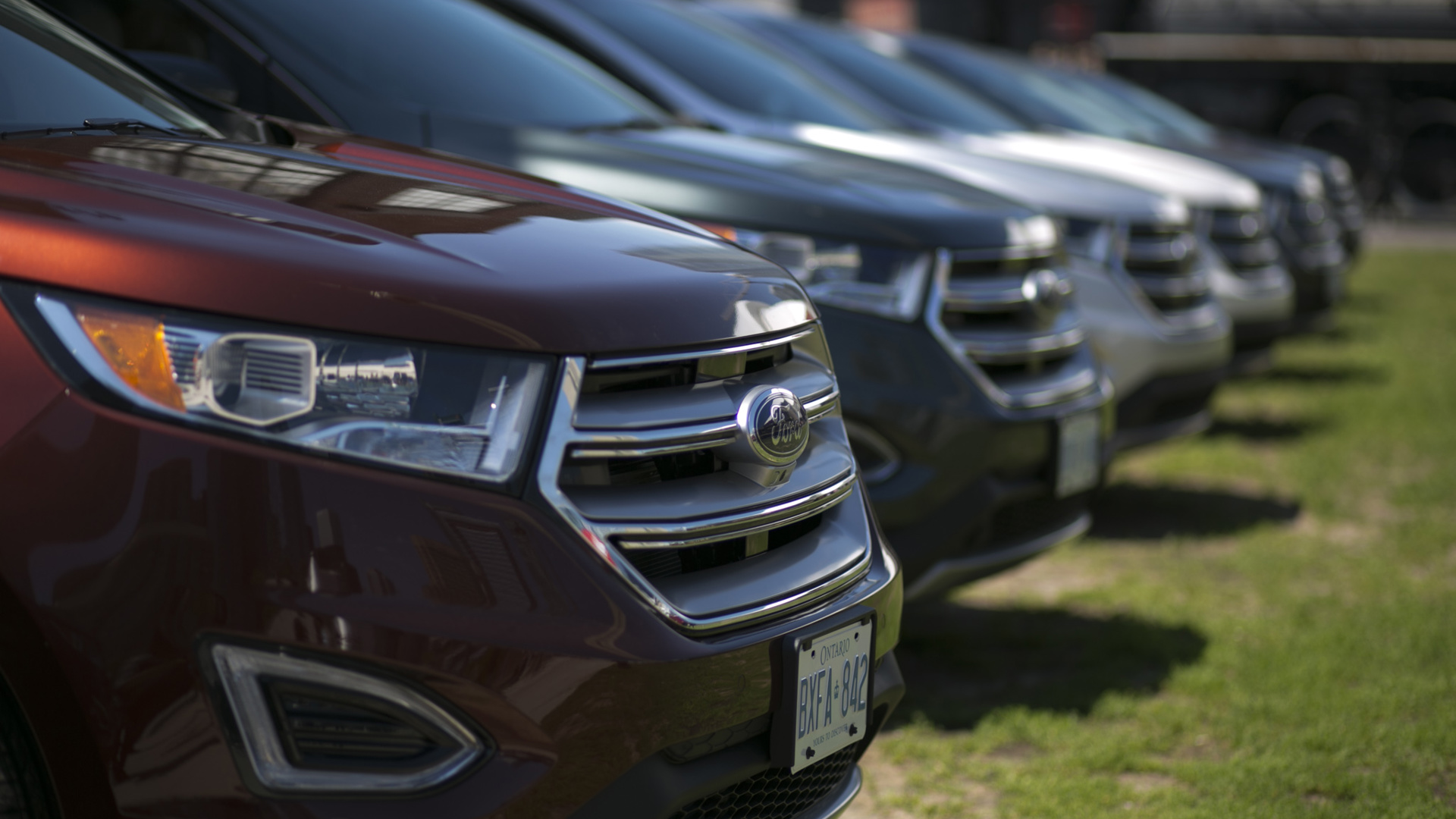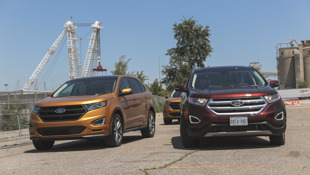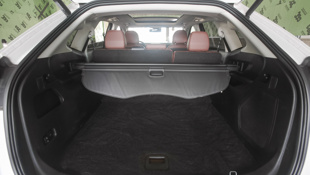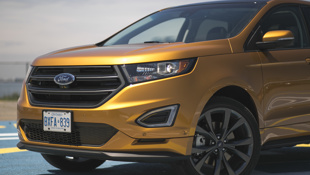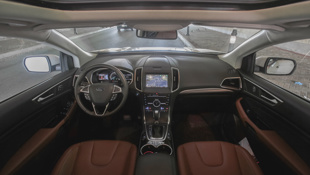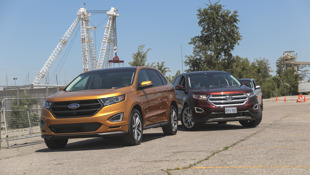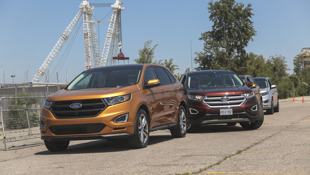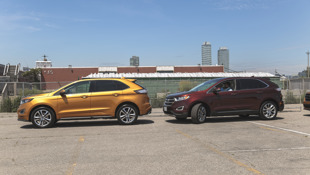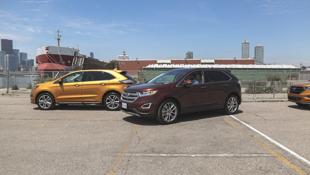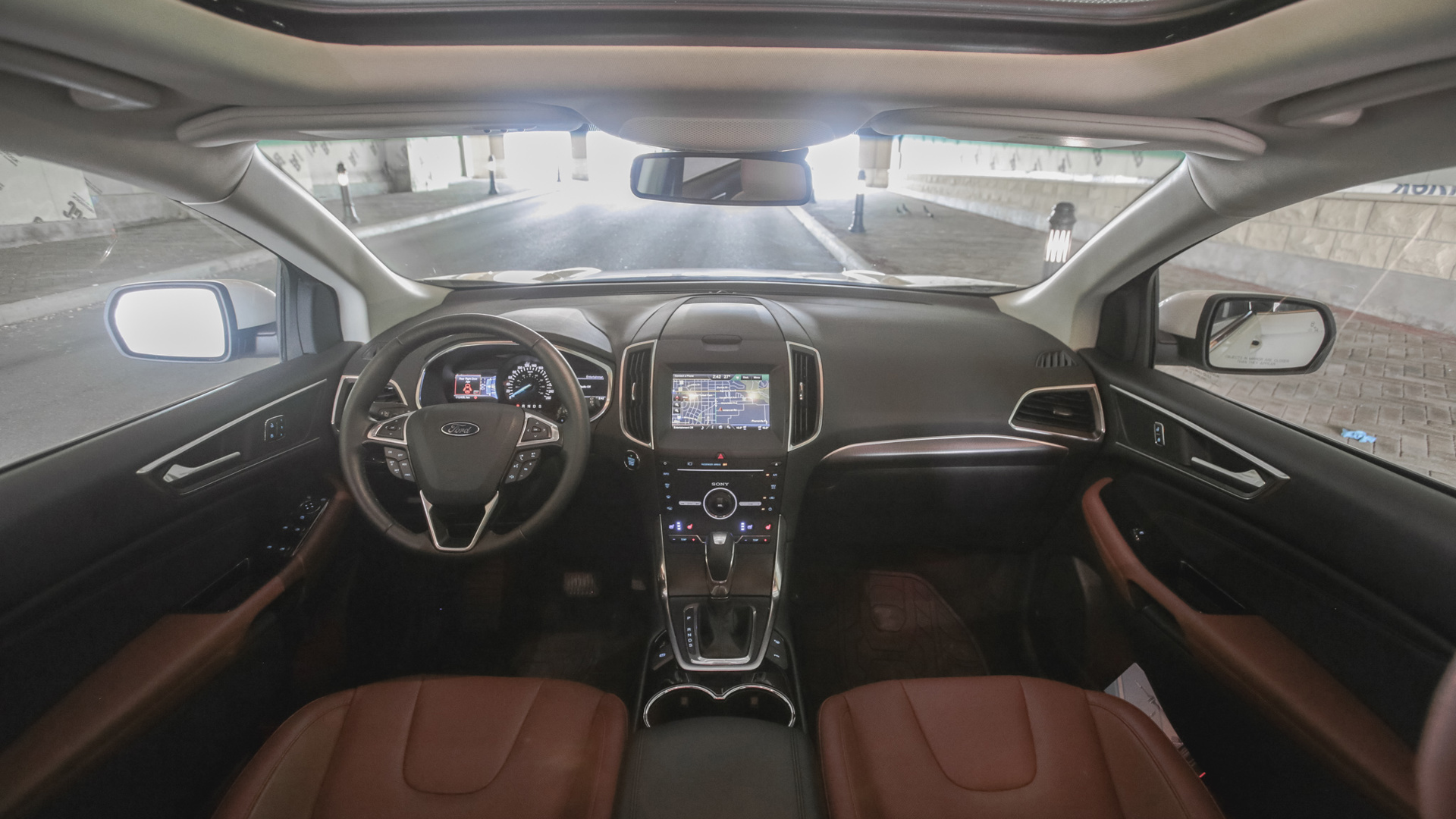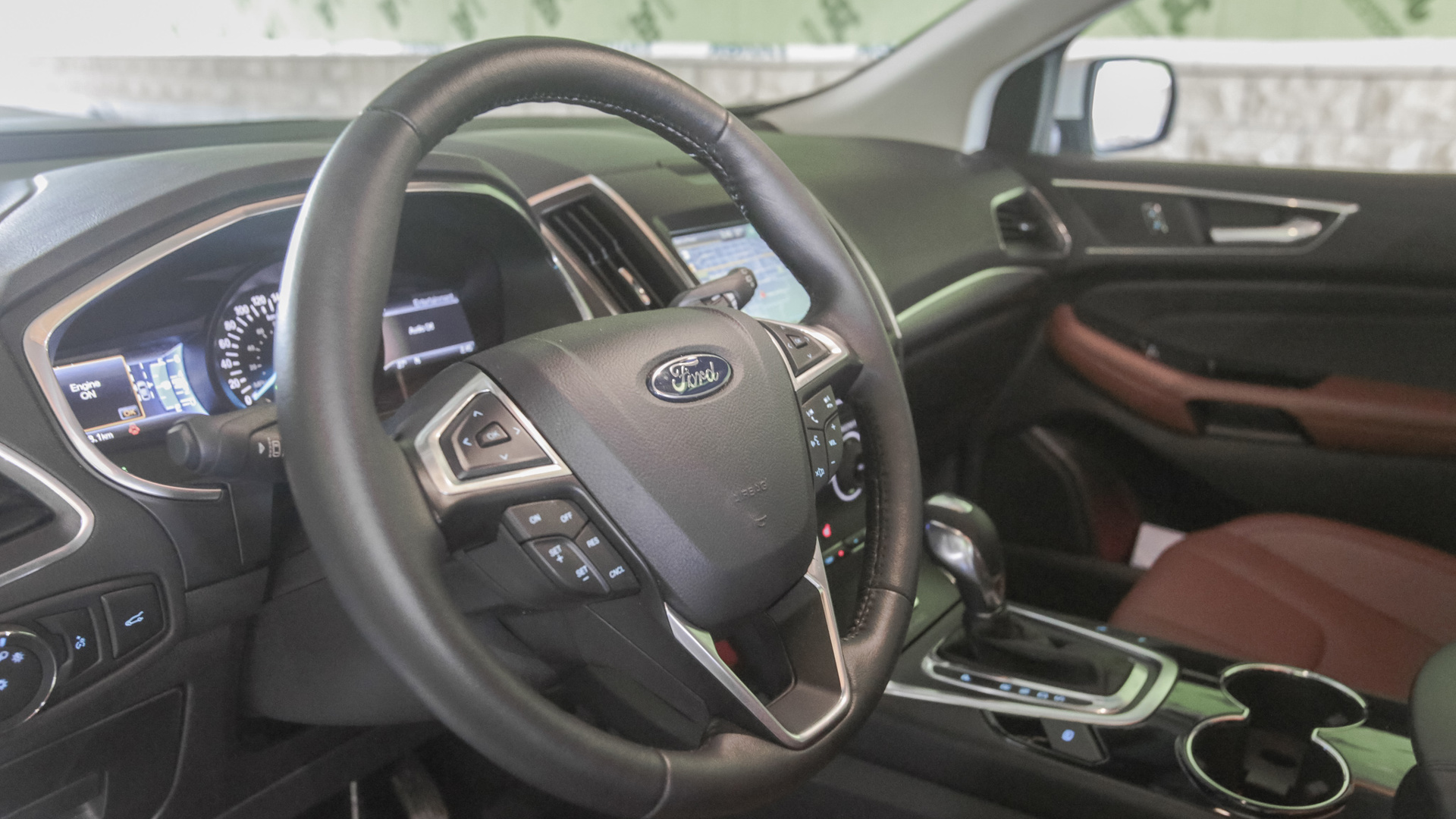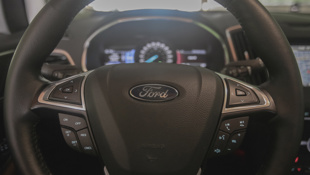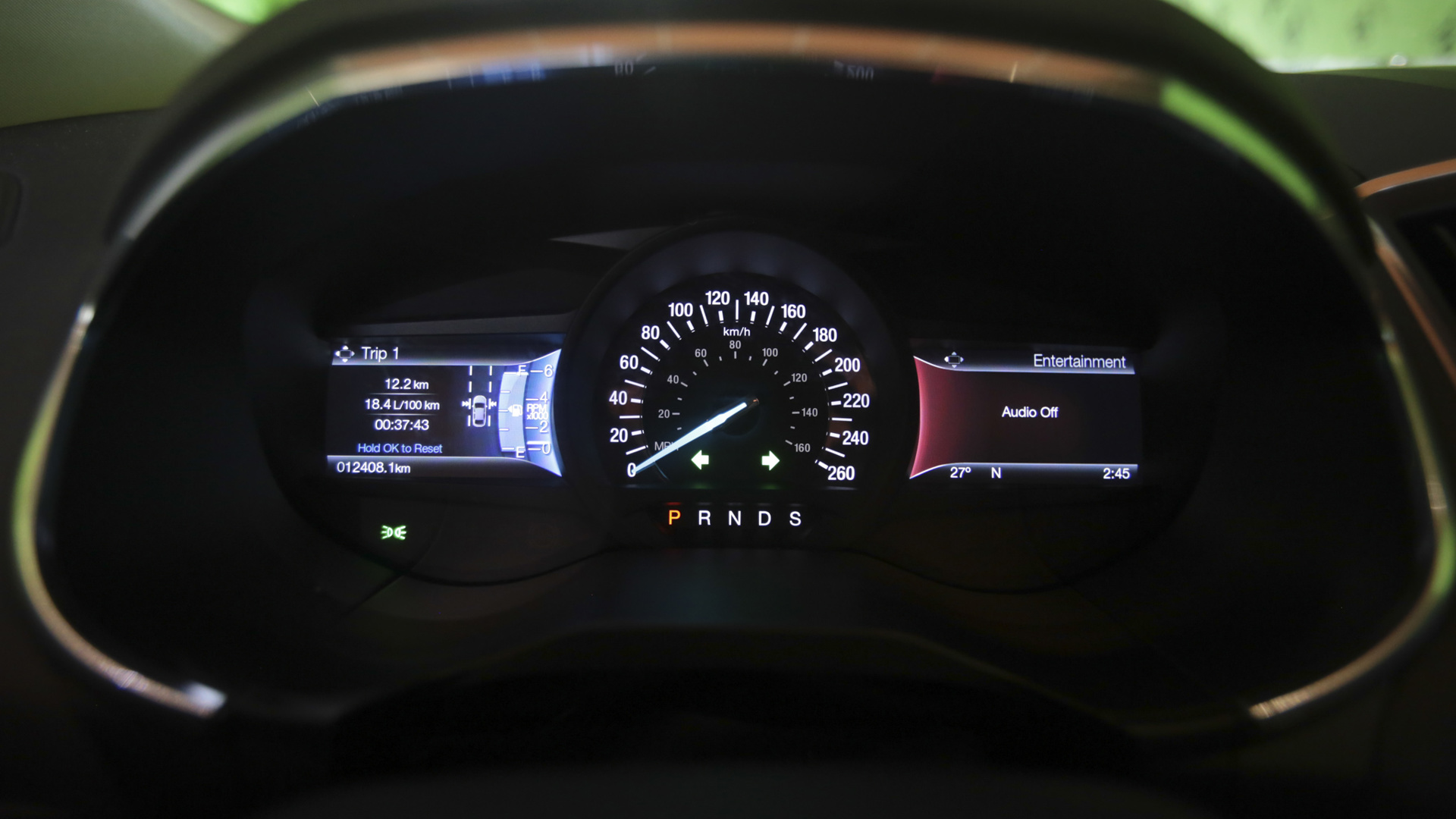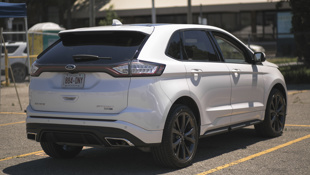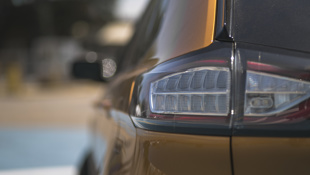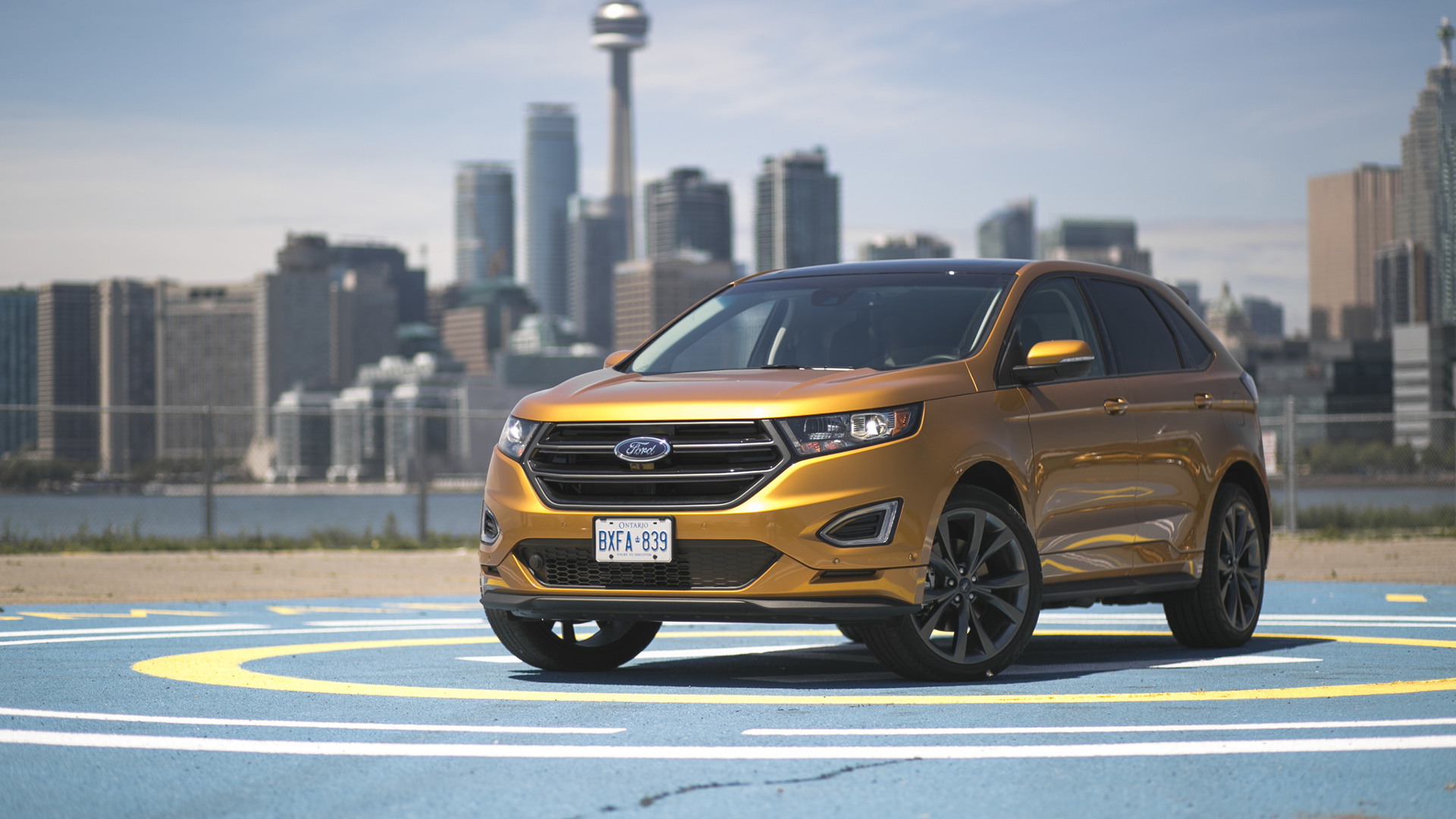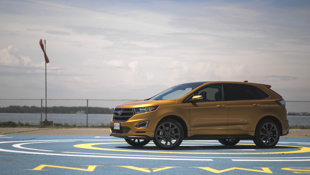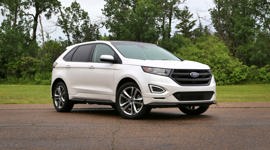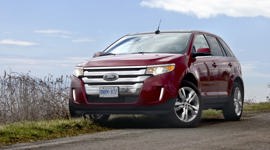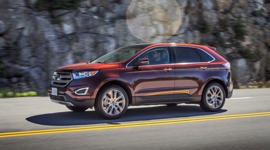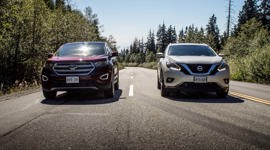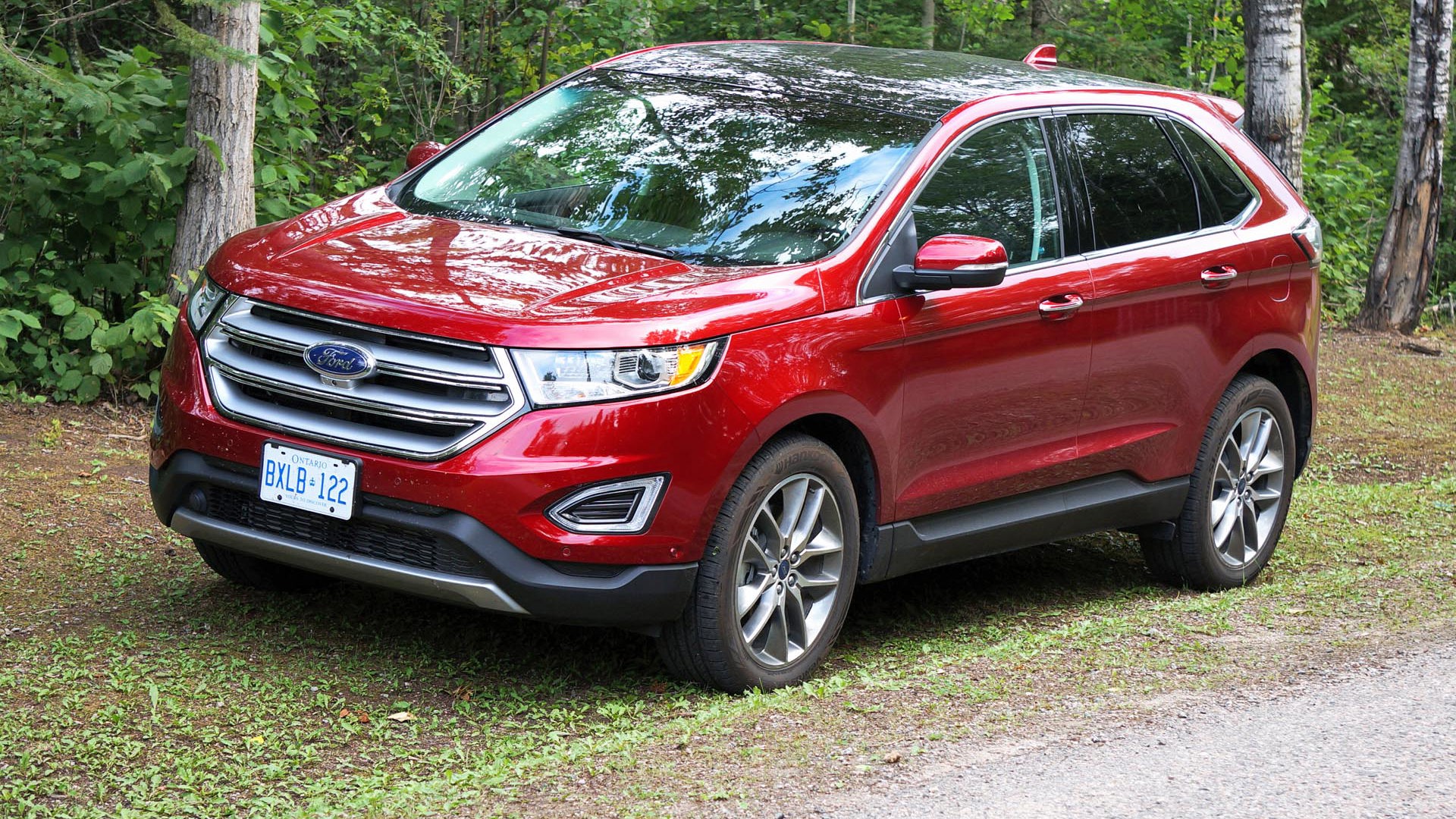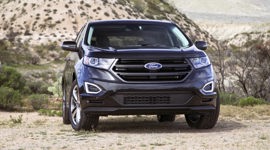Last week, I received an invite to drive the the all-new, second-generation Ford Edge. This time, instead of getting on a plane and driving the Edge in a faraway land, I had the chance to drive it in my own backyard, Toronto. The new Edge, assembled in Oakville, Ontario, will be going global in 100 markets for the first time and it will be making its debut over in Europe this year.
Its competitors just didn’t offer enough to dethrone the Edge from its mid-size, five-seat crossover SUV throne.
The new Edge will come available with three engines and four trims - SE, SEL, Titanium, and Sport - all are available with AWD. This comes as no surprise, as according to Ford, 75 percent of all Ford Edges sold in Canada are AWD.
I’ve always been a fan of the Ford Edge. For what it is, I believe the last generation Ford Edge was the best example of its vehicle type in terms of styling, driving manners, price point and options. I feel like its competitors just didn’t offer enough to dethrone the Edge from its mid-size, five-seat crossover SUV throne. The all-new Edge sets out to retain that crown and I’m fairly certain it will remain popular, especially considering the standard engine is a 2.0L Ecoboost turbocharged four-cylinder pumping out a healthy 250 hp and 275 lb-ft of torque. When you tick off the Sport AWD box, you’re now rewarded with a 2.7L Ecoboost turbocharged V6 pumping out an astonishing 315 hp and 360 lb-ft of torque. If turbocharging isn’t your thing, buyers can still opt for the naturally aspirated 3.5L V6 putting out a linear 280 hp and 250 lb-ft.
The 2015 Edge is unmistakably still an Edge but it does have an entirely refreshed look about it. The new front end is a toss up. Some buyers will love the new punchier-looking front end, while other buyers will feel the Edge’s aggressive looks have softened. The last Edge had an aggressive front facade with sharp headlights and a pointed nose, featuring high-end looking LED running lights. The grille was large and as aggressive as the grille on an F-150 truck. The new front end loses the look that marked the Edge as distinctly American and unique, and fits more in line with the other SUVs on the market. This isn’t a bad thing necessarily, it just marks a change.
The new platform is based on the Ford Fusion sedan that debuted in 2012. Compared to the outgoing model, the new Edge is 26 percent stiffer when reacting to bending forces and 16 percent stiffer when reacting to twisting forces. The Edge receives an all-new suspension to take full advantage of that stiffer frame. The AWD versions have an entirely reworked suspension front and rear and the FWD versions retain the MacPherson-type front suspension, but features a sophisticated new integral-link independent rear with coil springs and a 23-mm antiroll bar. This all translates into more ride comfort but also improved handling.
We spent some time with all three trims on the autocross portion of our drive and the new Edge’s handling characteristics defy its size and weight. Steering feedback from the now electrically assisted rack was good for an SUV and the Edge propelled me around the corners at a good clip. Overeager drivers will notice the advanced traction, torque-vectoring, and stability control found in the AdvanceTrac system will shut the fun down before you get into any serious trouble. I deliberately charged into corners far quicker than I should have and the electronic gizmos brought everything back into control (much to my tire-killing, fun-loving chagrin). The everyday driver will find this to be a welcome and comforting feature.
The Sport AWD versions will have an adaptive steering setup that places an electric motor between the wheel and the rack to “assist” the driver. This results in a variable turn ratio and fewer lock-to-lock turns when parking. The ability to dial in steering effort as needed will be a welcome one to many drivers.
Now for the engine talk. The first Edge I took out was the 2.0L Ecoboost version. With 250 hp and 275 lb-ft, this thing was no slouch. Power comes on with that familiar turbo thrust and the 2.0 proved to be responsive with on-off throttle transitions. Power delivery will be more than enough for most buyers. Enough power to pass when needed and enough torque to put a smile on your face for a full-throttle merge situation. Handling characteristics with the 2.0 proved to be more enjoyable than with the other engine versions due to the decreased front end weight. It felt more ‘tossable’ if you're looking for that quality in a crossover. On the other hand, the 2.0L is rated to tow a Class II trailer if that's a consideration.
Next up was the powerhouse 2.7L Ecoboost twin-turbo V6. With 315 hp and 350 lb-ft, this thing is a brute when you want it to be and upon launching, I was pushed back into my seat, similar to many sports cars or high-hp SUVs or sedans. The 2.7 Ecoboost Edge is good for a 6.2-second dash to 100 km/h and it really shines in the mid-range. It certainly brought a smile to my face when putting the pedal down when already cruising at 50 km/h. When brute force isn't required, the 2.7L provides a responsive and smooth driving experience. Outright emergency braking required a little more distance to come to a stop than with the 2.0L. As far as handling goes, the Sport AWD with its 15-percent stiffer anti-roll bars and 10-percent stiffer springs made for slightly higher entry speeds than with the other trims. There wasn’t any discernible difference in ride quality or comfort - it makes me wonder why all models weren’t equipped with the same suspension.
The major difference with the 2.7 is the thrust. With all that hp, powering our of any corner or stoplight is guaranteed to bring a huge smile to your face.
The 280-hp, 250 lb-ft 3.5L V6 drove as predictably as you would imagine. It had a very linear power band and a decent exhaust note. More than enough power to pass but without the same feeling of thrust as the other two Ecoboost-equipped Edges. I wouldn’t be surprised to see this engine being phased out over the years with deference to the Ecoboost options available.
Putting power down to the wheels in all trims is a standard six-speed automatic with Sport mode and flappy paddles. Shifts come as expected and take just as much time as you would imagine. The gizmo-brain did a decent job of knowing when I wanted to downshift or hold a gear in Sport mode. When the gizmos proved to be confused with what I wanted, there was always the option of me grabbing control on the fly with the flappy paddles. No complaints about the transmission.
The next bit concerns the portion of the day I was really looking forward to driving (or not driving). The Edge is now available with an enhanced active parking-assist system. The active parking system will park your Edge for you in almost any situation, whether it’s parallel parking or perpendicular parking, even backing the Edge into a spot for you.
The system combines user input and the hive mind in the active parking system. First up, I tested the parallel parking feature. It’s kind of a neat process that I had to repeat several times due to outright awe because of how awesome it was. I don’t want to hear that “A real driver can park their own car.” I know, I know... I’m not disputing that, but it sure is neat to let the robots do it for me once in a while.
Simulating a parallel park situation on a public street, I pulled up next to a line of cars and activated the active park system. My media screen display switched over into parking mode and notified me when there was a space that would allow the Edge to fit safely. Once I had the green light, I pulled past the space until the Edge told me stop (just as I would park normally). I then hit the ‘go’ button and released my hands from the wheel. "Look, Ma! No hands!" Unlike other systems, the Edge can park itself faster than most skilled human drivers can. The reason being is the driver is solely responsible for the speed of the Edge. It can back up as fast as you want, or as slow as you want. If you need to take control for any reason at all, simply putting your hands back on the wheel cancels the active assist immediately.
I snicked the Edge into reverse and slowly released pressure from the brake and watched as the wheel magically spun to full lock as I was reversing. After the back end of the Edge slid into the spot at full lock, I stopped the Edge as it told me to put the car in Drive. I tapped it back into Drive and again watched as the wheel did its thing and tucked the front end into line. When it was tucked in, I was told to put the Edge back into reverse and back up a foot or so. The whole process can go as quickly as you want or as slow as you want.
I had to try it again faster and I repeated all the steps, except this time, I decide to speed everything up and I was indeed rewarded with a faster parallel park than I could have done on my own. Living downtown, parallel parking is a daily experience.
I didn’t try the perpendicular parking myself but I did watch some of my colleagues do so without any fuss. During the perpendicular parking demonstration, Ford simulated a human walking across the parking spot with a baby carriage while the Edge was pulling out of its spot. The forward facing 180-degree camera instantly detected the person and stopped the Edge in time without any fuss.
The interior has been updated to be larger and more spacious with materials feeling a little more refined and high end. Ford claims the large panoramic sunroof is the largest in the industry. It's big, that's for sure. Legroom and headroom have been increased significantly. Cargo space has increased to 2,078 litres behind the first row and 1,111 litres behind the second row - that means 198 litres more behind the second row than the first-gen Edge. Wheelbase has grown 25 mm and overall length is up 99 mm. The only downside to the new interior for the Edge is that there will be no third-row option in our market, unlike China. With the three-row Explorer and Flex available in North America, I can understand the decision to keep it simple.
As far as everyday driving characteristics go, I had the chance to drive the Edge in a good mixture of daily Toronto traffic. Up and down the DVP, the Bayview extension and through large suburban avenues and tiny downtown streets, the Edge felt at home in all situations. The air-conditioned seats in my tester made it a cool drive on a sticky and hot summer afternoon in the city.
The Edge serves as a rolling showcase for Ford’s newest technologies. Equipped with things like Active Grille Shutters for the 2.0L and 2.7L, adaptive cruise control and warning systems, adaptive steering technology, improved aerodynamics, auto stop-start, blind spot information systems, 180-degree forward facing camera with washer to clean the camera as desired, optional enhanced park assist, cross traffic alert, hands-free lift gate, and an advanced lane keeping system. Advanced safety features include inflatable rear seat belts, combining airbag tech with seat belt tech, it’s designed to reduce head, neck and chest injuries in a crash by evenly distributing the force of impact. An active glovebox airbag makes an appearance to cushion the knees of a passenger in case of crash.
The new Edge with all its bells and whistles really does provide the driver and buyer with a near-luxury experience for a fair price. It feels a lot more upscale than the segment should. Ford have certainly come a long way from the days of a Ford Windstar van, that’s for sure, and I’m impressed by their turnaround.
The Edge starts at $31,999 for the SE front-wheel-drive equipped with the 2.0L Ecoboost. The SEL comes in at $35,099, also with the 2.0 turbo as standard. Edge Titanium will run you $37,199, also standard with the 2.0, while the Sport AWD comes with only the 2.7L Ecoboost twin-turbo V6 for $45,199. While the SE, SEL and Titanium all come with the 2.0 Ecoboost as standard, the 3.6L V6 is available for all three trims as an option. All-wheel-drive is available for all models and adds $2,000. All prices are pre-delivery and freight.
Pricing: 2015 Ford Edge
SE FWD: $31,999
SE AWD: $33,999
SEL FWD: $35,099
SEL AWD: $37,099
Titanium FWD: $37,199
Titanium AWD: $39,199
Sport (AWD is Standard): $45,199
Options:
(SE, SEL, Titanium) 3.5L V6 EcoBoost: $500.
(SEL) Equipment Group 201A: $800 – SYNC with MyFord Touch, Premium 9-speaker audio system, Remote Start System.
(Titanium) 301A Equipment Group: $1,300 – BLIS (Blind Spot Information System) with cross-traffic alert, Auto-dimming driver’s side exterior mirror, 110V power outlet, Heated steering wheel, Heated rear seats, Heated and cooled front seats, Perforated leather-trimmed sport seats.
(Titanium) 302A Equipment Group: $3,800 – all 301A features, Lane Keeping System, Enhanced Park Assist with Side Parking Sensors, Front 180 degree camera, HID headlamps with auto high beams, Rain-sensing wipers, 2nd-row inflatable outboard safety belts.
(Sport) 401A Equipment Group: $4,350 – BLIS (Blind Spot Information System) with cross-traffic alert, Auto-dimming driver’s side exterior mirror, 110V power outlet, Lane Keeping System, Heated rear seats, Heated and cooled front seats, Enhanced Park Assist with side parking sensors, Front 180 degree camera, Hands-free liftgate, HID headlamps with auto high beams, Rain-sensing wipers.
Freight: $1,690
NRCan Fuel Consumption Estimate(L/100km city/hwy):
2L Ecoboost
FWD: 11.5/7.8
AWD: 11.8/8.4
3.5L V6
FWD: 13.2/9.0
AWD: 13.7/9.6
2.7L Ecoboost
AWD: 13.6/9.8
| Warranty: 3 years/60,000 km; 5 years/100,000 km powertrain; 5 years/unlimited distance corrosion perforation; 5 years/100,000 km roadside assistance Competitors: |
